CRAFT BREATHTAKING AUDIOVISUAL EFFECTS IN REAL TIME
Isadora 3, a user-friendly platform that responds to and evolves with your creativity.

OUT-OF-THE-BOX FUNCTIONALITY, OUTSIDE-THE-BOX CREATIVITY
Whether you are a designer, technician, student, or an artist, working with video, audio, or other media, Isadora is ready to serve your creative impulses. Our software combines the video and audio processing engine of a media server with a hyper-flexible visual programming environment to create an incredibly versatile media playback platform.
Isadora lets your imagination run wild.
FROM EVERYWHERE TO ANYWHERE
IzzyCast enables the sharing of multiple streams of video, audio, and data between locations around the world. By combining IzzyCast with Isadora‘s ultra-flexible architecture, you will be able to transmit, receive, route, mix, and control anything and everything in ways limited only by your imagination.
Never struggle with remote performance setups again.
PAMELA Z: Travel, Sound and Memory
Studying classical voice and singing arias somehow lead Pamela Z towards the life of an experimental performer–combining sound, video and live projection. She’s created a long career that has culminated in being granted the 2019/2020 Rome Prize of the American Academy in Rome, Italy.
“After graduating from college in 1978, I realized that I was more interested in experimental music and started composing pieces with voice and digital delays. I was able to combine classical vocal practice with new techniques,” says the artist, who is mostly based in San Francisco.
WEBSITE: pamelaz.com
By the 1990s, she was utilizing Max MSP, which came with Jitter. She says it was a workshop in New York City with Isadora creator Mark Coniglio that revamped and elevated her practice, moving it to live, manipulation of video. It was the late 1990s and Coniglio was introducing people to live, interactive media performance.
“With Isadora I was able to use my own intuition as to what object or actor I needed. I figured a lot of it out on my own, sometimes if it was complicated I would post in the TroikaTronix Forum and Mark would answer!”
Z (that is her official last name, by the way) calls Isadora “user friendly.” She began employing it more around 2007 and hasn’t looked back. That’s how she ended up creating a seven-part exhibition called Baggage Allowance.
“I’m constantly on the road, hauling my stuff all over the planet and there are these issues with the TSA (Transportation Security Agency). So, I started thinking about baggage in the wider sense, metaphorical. The emotional attachments we have.”
Baggage Allowance was a major project that included an evening-length multimedia performance work, a seven-part gallery exhibition of installations, and a browser-based installation designed to be experienced online.
In the performance work, Z moved around on a stage performing with voice, live electronic processing, found objects, and various large projection surfaces populated with images from three video projectors and a film projector.
In the gallery exhibition, there were objects with embedded sound and image, including a luggage X-ray contraption she created with an actual conveyor belt in which strange, unexpected objects would show up on the display when viewers’ bags were scanned.
Z’s favorite piece of all from the installation is something called Suitcase, which was recently shown at the San Francisco Arts Commission Gallery (2019).
“It’s one of those sturdy, antique pieces of luggage. When you walk up to it, you can see a grown woman sleeping inside. It’s me of course. You can hear the sound of whispering and muttering about things one would worry about while trying to get to sleep and, occasionally, I wake up and look directly at the viewer,” Z explained. “The sound is only audible if a viewer gets close. People are often startled by it. People find it charming and creepy!”
To create Suitcase, she first built a box out of plywood that had the same proportions as the suitcase but was large enough for her to fit in. She photographed the printed pattern of the original suitcase’s lining, blew it up, and papered the box with it. Z then curled up inside and used a camera to shoot herself sleeping. After, she filled the suitcase with white plaster, so it had a bit of depth—she made a mound. With Isadora, she projected her sleeping self onto the suitcase mound. Voila, woman inside box.
“I use a Mac mini, a projector, and a little camera mounted high up. The web cam is near the projector, so it can sense when a person is standing there and activate the sound,” Z said. Of all her installations, Suitcase is perhaps the one that has been shown the most.
Z spent most of 2009-2010 creating the Baggage Allowance installation and performance work, and she completed the browser-based installation ( baggageallowance.tv ) in 2011.
Z herself is mostly engaged with live performance using solo voice and electronics often with multiple channels or a single channel of video. She insists on projecting images very large either on an upstage wall or, preferably, rear-projected on a scrim or cyc (cyclorama) behind her.
“I want video to be integral to the performance and connected to it. When people look at a stage, they will see I’m immersed in this image.”
Z recalls a large format performance she did at The Kitchen in New York city’s Chelsea district for performance series called Assembly. The entire venue, the two-floor gallery and offices, was transformed into three floors of theatre space. Each floor featured one artist. Z got the third floor which had three 16×9 screens connected end-to-end. She would only have two days of rehearsals before opening day.
“I created a 45-minute set out of existing works along with some new material as connective tissue to create a cohesive piece. One video was phone footage I had shot in New York of a pipe spewing steam, producing a beautiful set of clouds. With Isadora, I figured a way to move that steam with the amplitude of my voice.”
Z threw together a template in Isadora. She flew to New York, hooked up her equipment and tweaked the template. Everything worked out beautifully.
In 2019, Z had an opportunity to have her first solo exhibition in Berlin and give a concert. Invited by the progressive curators of Savvy Contemporary (in collaboration with Deutschlandfunk Kultur and CTM Festival), she produced a four-part exhibition called Sonic Gestures.
One part of the exhibition, Memory Palace, involves a six-channel video installation with stereo sound. It is derived from an evening-length performance work called Memory Trace in which Z explored various aspects of memory using sampled text, gestures, voice and electronics.
Essentially, you see six videos of Z. One of the Z entities is questioning the five other Z entities with queries such as “Do you remember names, numbers or dreams?” or, “Do you remember where you parked the car?” The one who questions also asks: “Have you used this technique called Memory Palace?”
The Memory Palace technique is real. It requires you to imagine a specific place in your mind and you have to picture everything that is there—for example, it could contain a couch, a piano, a painting, a green vase etc… This place is one that you know very well and then you assign something you need to remember to an object in this place. For instance, your best friend’s address is connected to the green vase.
The Berlin exhibit required the visitor to step onto a specific spot (indicated with two small speakers hanging down toward the ears of the listener) in order to trigger the various entities of Z to come into focus on screen and to activate the audio. Z used an Isadora Actor to search for the presence of a person, i.e. it is looking for a mass of darkness in contrast to the white floor.
One of the sources of material for the larger work, Memory Trace, began more than five years ago when Z’s mother was dying. She interviewed her and tried to jog her memories of the past by playing music that she had listened to in her youth. Z made a film of these interactions. Her mother died in 2016, and Z used the footage as a section of the performance work. She also conducted video-taped interviews with several people in which she asked questions about their dreams and what they remembered. These, full-body videos were edited and projected on tall screens in the performance.
“The idea of Memory Trace comes from the fact that scientists have discovered there’s a path in the brain every time you recall a memory, but you are changing it as you recall it. So, the way you remember it now is NOT how it actually happened.”
In this way, we grow distant from the reality of a memory and, similarly, in her career, Z is also getting distance from her work.
“Galleries are now more frequently asking to show my installation works and I’m being commissioned regularly to compose works for chamber ensembles, which are playing my music while I’m not there,” she noted.
“As a live performer, it’s the weirdest feeling but maybe it’s like having children. They carry on without you.”
Text by June Chua in collaboration with Pamela Z [Interview conducted in August 2019]
IMAGE CREDITS Page 1: Courtesy of The LAB Page 2: Valerie Oliveiro Page 3: Paula Court Page 4: Courtesy of voxlab Page 5: Paula Court Page 6: Pamela Z
JUSTIN STEPHENSON: The Faceless Forces of Bigness
Justin Stephenson : is laughing and thinking while trying to come up with some descriptions of what his project is: “It’s almost like surfing!” Stephenson, an award-winning filmmaker, is talking about the Faceless Forces of Bigness (FFoB). It all started as a collaboration between the video/art designer and a few longtime friends: Michael Philip Wojewoda , John D.S. Adams , Chris Stringer and Kurt Swinghammer – all venerable, well-respected artist-musicians in their own right. “We use analog modular synthesizers and feedback loops to create generative music – it’s all random and we’re all out there in the ocean just trying to shepherd it,” explains Stephenson, who has been in demand in Canada for his skills as a director and motion design specialist. His previous credits include The Complete Works (Director), The Secret Path (animated documentary) and Robert Lepage’s Ewartung and Bluebeard’s Castle with The Canadian Opera Company.
The group has been together for almost 20 years. Over that time, Stephenson has been trying to get the video to respond to the audio. “The computers were so slow back then, and the software just wasn’t up to the task, I ended up performing the video as opposed to allowing the sound to drive it” he explains. “Then, I recently switched to Isadora and found it to be the perfect tool for this improvised audio-visual experience and helped me get my bearings – I was able to create tools to respond to the audio performance. As Isadora user dusX put it in the Isadora forum, ‘there is something in creating a tool, that helps you find the meaning in the content.‘ When we were setting up and I started to see the picture responding to the audio, I felt like this was the thing I had been trying to achieve for all these years with FFoB“ Stephenson says he was particularly pleased with the software’s lack of latency, the ability to have up to eight discreet audio inputs, the ability to used FFGL plugins and Shader Toy shaders and how simple it is to bring in serial inputs from Arduino: “It’s so easy, it’s crazy! Because you define the environment and workflow in Isadora, you can work through complex ideas very quickly”
The group performed at the leading experimental music festival Sound Symposium in Newfoundland in August 2018. FFoB did a one-hour set for a sold-out, enthusiastic audience. FFoB also led a workshop at the symposium. “We all show up with our respective ideas and there is very little talking,” Stephenson says when asked about the kind of preparation FFoB does. “As it is improvised, the performances are more akin to conversations as opposed to being designed as shows. Before the show, we do talk about arc – such as, we should start out soft, go loud, then quiet and then go musical and end on a bang.” Click to watch the FFoB Video
However, he reveals they do get together to “rehearse,” which can last up to six hours: “It’s an opportunity for these guys – who are at the top of their game – to create an environment where things can evolve and devolve. They’re looking to extend the boundaries of what music and performance are.” For his part, Stephenson blends nature imagery, text, and sequences depicting acts of reading and writing using digital glitching effects, overlays, scaling, color treatments and blurs. “My concern in all my work explores the relationships between language and The Real, the discrete and the continuous,” he describes.“I’m modulating all of my clip and effects parameters with the audio coming from each of the guys. When the picture is tightly linked to the audio, you don’t need a lot of fancy effects to create visual interest. One of the most exciting things about FFoB is that it is improvised, we don’t know what the end result will be! Mostly it’s beautiful, though sometimes it’s awful. We just perform and then suddenly, it’s done.” Stephenson finds pleasure in responding to the moment: “It’s liberating to work in real time.”
In his professional work, which involves animation and post-production utilizing a lot of animation and editing software, he’s usually sitting in a suite constantly refining and cutting: “In my day-to-day work, I’m working frame-by-frame, pixel-by-pixel.” Stephenson’s Isadora experience reaches far back. He’s used it for stage performances including a piece by Canadian choreographer Denise Fujiwara, Euonia, based on a book of poetry: “The ability to go from scene to scene, and create snapshots was ideal for quickly iterating a show” He hadn’t been thinking of utilizing Isadora for FFoB. Up until this show, he had been using a range of VJ packages: “While I love VJ software, I found that it leads you into performing rather than developing concepts around audio reactivity. I wanted to get to that point where the sound was really driving the picture. I thought to try Isadora for our show in Newfoundland” Then, everything changed. “With Isadora, the ability to make and modify your own tools was ideal. For fast prototyping, it’s optimal. Just before the show, I thought I’d love to have a controllable multiplier for the audio inputs and just five minutes before we started, I had that tool for the show.”
At the workshop in Newfoundland, he was able to highlight the finer points of using Isadora and how to customize it to individual needs. “One of the most useful things is the way you can create your own reusable modules with various logic, effects and clips. It makes it possible to easily explore relationships and develop ideas in a way that makes sense to how you are thinking about the work…it’s instantly responsive and engaging.” Stephenson intends on continuing to “noodle” with the software and to keep experimenting. “The patches can always be tinkered with, optimized and improved – it becomes a bit of an obsession” Meanwhile, FFoB is looking to expand its concerts to more venues outside of Canada and to more festivals. “When we’re performing, we hit a groove at a certain point. If you’ve ever done VR – it’s like that. Because we’re combining improvised video and audio, you’re stepping into another world and there is nothing marking time. It’s such a feeling of freedom and elation. Our work at Sound Symposium really galvanized us all to want to do this more.”
Text by June Chua | Images by Justin Stephenson + Michael Phillip Wojewoda [Interview conducted in October 2018]
FERNANDA D’AGOSTINO: Borderline
“My job as an artist is to see, so I’m going to look deeply at things that concern me and not look away,” Fernanda D’Agostino http://www.fernandadagostino.com/ states emphatically. The Portland, Oregon-based multimedia artist is explaining the origins of her project Borderline. “I’m exploring mass migration, climate change and surveillance culture…all these things began to weigh more heavily on my mind when Donald Trump was elected.” D’Agostino adds that the other trigger was a Facebook post by a cousin in Italy, a “conservative”: “He was using the same prejudiced language about Mediterranean migrants that was used against my grandparents 100 years ago when they immigrated to the U.S.” The cousin told D’Agostino she understood nothing about the migrant crisis in the Mediterranean, and that’s when she put on her artist’s searchlights. “I started checking Italian coastguard footage of migrants in the Mediterranean, as well as government surveillance video of the U.S border and EU footage of their land borders. I also did parallel research investigating U.S. forest fire footage and climate monitoring footage from the NOAA [National Oceanographic and Atmospheric Administration]. I collected it all, not knowing what it meant or if there were any connections,” says D’Agostino.
Around the fall of 2017, the puzzle pieces started to come together after D’Agostino met two dancers, Jaleesa Johnston and Sophia Wright Emigh. All three were part of an artists’ study group at Open Signal Media Center, in Portland, OR. “Both were deeply committed to investigating embodied trauma and generational memory – Jaleesa is an African American and Sophia is the granddaughter of Holocaust survivors,” said D’Agostino. “I had similar concerns so we decided to collaborate on a performance project.” At the same time as the trio got together, D’Agostino became a visiting member of Collective Action Studio in San Francisco. She was helping the collective create some videos for a mapping project at the Palace of Fine Arts and met Tra Bouscaren who was working with Isadora. He offered to do a couple of tutorials to get her up and running in Isadora. “I had never seen a program that powerful! I was blown away by what you could do. So, I went home and did every online tutorial,” exclaims D’Agostino. “I have to give kudos to [Isadora creator Mark Coniglio]. I’ve tried to learn coding and I’m 69…I couldn’t. Isadora was a revelation.”
“Each of Isadora’s palette of User Actors enables a different function or effect. Up until this point I had been using Max for my coding, where you build every effect or function from scratch, and I needed a programmer’s help. With Isadora, I can string the User Actors together to create interesting effects and have become a coder in my own right.” D’Agostino says. “Another revolutionary aspect of Isadora is the ability to combine scenes. In the past, I’ve done three Max projects with one or two scenes each, but with Isadora I’m able to make a series of scenes and randomly dissolve them into each other. Like thoughts coming in and out of focus, this Isadora randomization mimics the ‘stream of consciousness’ flow of time vital for this project.” D’Agostino started her artistic life as a performance artist in the 1980s but is now more of a multimedia artist and director. To develop footage for Borderline with performance artists Johnston and Emigh, she provided movement prompts using words such as “tentativeness,” “hiding” or “stealth.” The pair came up with their own actions and additional concepts. “I’m not the choreographer,” insists D’Agostino. “They are bringing the wealth of their own artistic and movement practices to our work together.” Performance footage https://vimeo.com/fernandadagostino of their collaborative work is a key part of Borderline: “Mirror neurons are the empathy machine in humans. When people see figures within the projections, that activates a different quality of responsiveness and dissolves the separateness we too frequently feel when others are in crisis.”
In creating the installation for the Portland Art Museum (The Map is not the Territory, Feb. 8 to May 9, 2019), D’Agostino seeks to place the viewer inside the action: “I’ve used a video camera input to place viewers in scenes of surveillance at borders around the world, as a way of making them remember we are all implicated and effected by these scenes of catastrophe or dystopia.” The work at the museum is the culmination of an ongoing series all titled Borderline. At PAM, the installation uses two five-meter scrims and a floor projection in the atrium of the museum. The scenes appear randomly on the scrims and floor yielding infinite combinations and implied meanings. For D’Agostino, Mark’s tutorials were so effective that some of the scenes she created using the online tutorials are now appearing in the project itself. “Isadora has changed my artistic life,” she reveals. “I have the power to change and make anything. It’s so much user-friendly than anything else out there.”
The work is deeply affecting, provoking emotion. Borderline is as concerned about the psychological borders that separate people as the geographic ones. Borderline also investigates the tipping point, or the line between things working and things falling apart. In addition, the artist is sensitive to the fact that very little of her own daily life has changed despite ominous and terrible things around the world and in her own country. The question for D’Agostino creatively was — how to bring those worlds together? “In the 60s, this used to manifest as giant protests but now, I think the response is online.” In Borderline, utilizing technological advances to link up all the dots has been critical. “I hope people have an emotional reaction to Borderline,” she says. “Real change happens most often as a result of emotional connection.”
Text by June Chua | Images by Brian Foulkes [Interview conducted in December 2018]
MORITZ MAJCE + SANDRA MAN: Choros
Excavating the past to learn for the present — an idea that has, so far, sparked a six-part series project by Moritz Majce and Sandra Man. Visiting Greece, the Berlin-based artists hit upon the idea of choros – Greek for “dancing place.” It denotes both the locale and the people who are dancing there.
“While they are dancing, they are connecting to the space, out in nature,” explains Majce. “It’s more like a ritual because you are part of what’s going on.”
In ancient Greek theatre there was often a circular space between the stage and audience, the orchestra. It’s where the chorus is placed.
“We looked at the very beginnings of art and thought about what framework was set there that is still active now” said Majce. “Art has to be in contact with what’s going on in the present. So, we did something that is inspired by the past but included themes of nature and technology.”
Choros was borne of that concept — utilizing the circle, environment and melding performers with audience at times. The project is what they call a ‘space choreography,’ a moving installation in which the audience is a participant. The works are also examining what it means to be a spectator. Majce and Man seek to have the audience follow their own paths rather than have the performers guide them.
It’s been a leap for Majce, who comes from fine art world and spent only a year with Isadora to learn how to use live video and sound for exhibits and performances. He found it easy to work with and is pleased with the results.
Choros has expanded into six parts, which Majce describes here.
CHOROS I: Ufer Studios, Berlin. We worked with a group of 6 to 8 people using circular moving patterns and texts provided by Sandra. We had the old Greek meter of rhyming with the choir moving and also turning around – we worked on the relationship between movement and the lyrics of the rhymes blending breathing and the movement of the body and text. Sandra and I explored an old way of dealing with language and relationships within a group. We also experimented with mini round stages.
CHOROS II: Kunstfabrik am Flutgraben, Berlin. A followup to the first Choros. We still used rhymes, this time we blended in singing and the focus was the chorus as the agent creating a space for the audience. It’s like a moving installation made of dancers in which the spectators can walk in to and the installation reacts to them. Think of a group of wild animals where they are aware of you without doing any extra “performing” for you, and you can just be with them.
CHOROS III: The mountains of Austria. We took one dancer and made videos of the dancer in the landscape. It’s about how the landscape makes the body move. If you’re there for some time, you generate movement out of the location — you’re receiving from the environment. At one point, the dancer was stamping a small circle for hours in the grass. This was a two-month project and we made a multi-video and multi-audio-channel installation in a gallery, Kunstraum Lakeside, where it was a chorus of videos, not a chorus of people.
CHOROS IV: Hungarian Culture Institute, Berlin. We did a show for their Montag Modus performance series that included a four-screen installation with two performers speaking live, one in German and one in English. We re-arranged video material from the previous Choros chapters. The idea was to have different languages on stage speaking at the same time as the videos were running. The live performers were choreographed by the movement of the images. Sometimes, they would talk one after the other and at times, simultaneously.
CHOROS V: WUK performing arts, Vienna. We were in a theatre space and we had six trampolines, a circular tower made from wood, four huge projection screens and a hexagon made of real grass where the performers would do a round dance and the grass would decay and smell as it was dying over the duration of the performance. The performers were on all the sites. The videos were produced with the dancers in one of the biggest former coal mining areas in Germany called Lausitz. It’s a devastated space and has giant construction equipment still sitting there. It’s one of the biggest terraforming sites now. There are trees re-planted there and artificial lakes. Metaphorically, it’s an in-between place – it’s nature that’s been built by human technology.
CHOROS VI: District, Berlin. This is more like an installation where everything is going on at the same time. You can go to the video installation or the tower or have a look at the looping performances. There are displays on the tower and the choir performs throughout. It’s a continuum with no beginning or end. It’s not dependent on the audience to watch them. You can just watch and leave. Each night, we had a talk on the grass hexagon. We had a philosopher, a curator and a somatic trainer who did spectator training. It’s about the individual spectator and learning how to move their body as a different way of experiencing something in this space. We are exploring the idea of participation and also refraining from guiding the audience through a performance.
Text by June Chua | Images by Moritz Majce + Sandra Man [Interview conducted in November 2018]
Jake Witlen
As head of video for three years at the Schaubühne, one of Germany’s preeminent theaters, Jake Witlen’s mantra is, “Workflow. Workflow. Workflow.” The venue premiers about 15 shows per year, on top of 52 existing shows in repertoire, and tours shows approximately 160 days per year visiting about 30 countries. 85% of all productions integrate video and thus Isadora, ten of which are premiers, many of which push the limits of video onstage. A show opening this April called, Borgen, created and directed by Nicolas Stemann, uses Isadora to operate a concept among seven projectors, three cameras, two iPhones, and subtitles. The Schaubühne is well-equipped, but given the scale and number of shows it produces, resources are limited. A lot of logistics go into preparing a show; simply knowing what piece of equipment is available and when can be a puzzle. If a show is going to China for example, Jake can lose gear for three to five months. But he enjoys the challenge: “The fun part is figuring out your game.”
Jake’s responsible for coming up with a plan to ensure that every show runs smoothly and is reproducible. Reproducible means being able to load in, calibrate, and fine tune in a new space in just under two days before opening. He directs a small team of three to program Isadora and execute designs, a team that is typically split between two shows at a time. To be clear, Jake isn’t designing the show himself but instead tackling the trickier and more nuanced challenge of building someone else’s design. Every director who comes through the Schaubühne brings their own designer, and that designer has their own unique vision, communication style, and set of expectations. Jake has chosen Isadora for the Schaubühne because the software can meet the demands of every designer and calibrate quickly. “It’s flexible. For any single problem, Isadora offers 800 solutions. It totally beats the giant servers, which are really just playback machines.”
But sitting down with the director and video designer early in production is essential. Jake negotiates every last detail of the video concept – what is possible based on resources, time, and scale and what the workflow will be. Jake’s team then collaborates in programming the show and builds an Isadora file together. “Anyone could be programming a patch at any given time.” Order is key, but order is easy with Isadora. In fact, it’s so easy, Jake is able to teach the program to the designer’s assistants, so they’re up and running and trying out patches in the space in a matter of hours. Despite Jake’s long history with Isadora, both as director and designer, its myriad solutions never cease to astound him. Because his team is sharing patches, he learns something new from his collaborators almost every show, something that he’s never even thought possible. Isadora can realize “whatever [they] need to do – the blank page is infinite.”
Isadora’s creative potential is attributed to how it’s developed as a piece of software. The program’s creator, Mark Conilgio, is “coming at it from a creative standpoint, asking the question: what do I want out of it? And you can clearly see how he’s influenced by users all over the world.” Jake is active on the TroikaTronix forum and is keenly aware of Isadora’s constant evolution. “You read a question, and four days later you have an update. Mark’s already taken a user’s question and built the answer. When you need something, he’ll be there.”
On top of Isadora’s proven power and Mark’s responsiveness, Jake chooses Isadora because of its reliability. He describes a critical divide between the video department and other departments in the theater that is not exclusive to the Schaubühne. “Video is the evil stepchild in theater.” Troubleshooting might be clear for lighting and sound departments – turn it on and off, unplug and plug, check the cable, check the lamp, but “that’s not part of the game of video design – which doesn’t work for centuries-old departments.” Notable directors, such as Peter Stein, Robert Wilson, Thomas Ostermeier, Falk Richter, Katie Mitchell, Simon McBurney, and Milo Rau have secured the Schaubühne worldwide fame and respect over the last 50 years. So there’s little room for error in designing and running a show, regardless of how misunderstood the technology. With the help of Isadora, Jake is able to achieve sterling precision, professionalism, and organization.
Head of the Video Department at the Schaubühne Berlin, Germany Isadora user: 11 years Patching Style: OCD perfect, especially for shared files
Fotos: (c) Arno Declair Disconnected Child. Director: Falk Richter. Video Design: Christopher Kondek Richard III. Director Thomas Ostermeier. Video Design: Sébastien Dupouey Fear. Director: Falk Richter. Video Design: Bjørn Melhus
Text by Catherine Duquette [Interview conducted in 2015/16]
Dan Shorten
People can listen to a piece of music and tell you instantly if they like it or not, and they feel confident in saying so.” Award-winning video designer, Dan Shorten, wants his audience to be able do the same. Working under the moniker, Anomic Multimedia, he uses Isadora’s projection mapper for large-scale outdoor events and five-star touring productions, including the five-day Glastonbury Festival of performing arts and most recently, Shakespeare400, a series of public performances around London celebrating the 400-year legacy of The Bard. Running systems that can use up to 19 projectors, he transforms the facades of buildings and spaces into living entities and animated environments. An impressive 150,000 people a week can experience his work – that’s 8,000 pairs of eyes a night. With these kinds of numbers, success comes down to accessibility, as the larger the public, the wider range of responses. Some people might be attracted to the meaning, others the magic, and a few, the mechanics behind the mastery. But it’s this open invitation, one that trusts the audience’s sensibilities, that is part and parcel to Dan’s ethos of good art.
It’s also the reason why Dan has chosen Isadora as his primary control for video design. It’s “fast, logical and has a simple layout.” But it’s not as limited as even more widely known plug and play gadgets. “With Isadora, you have to ask questions: What do I want to do? How do I do it? What’s the outcome? How does this actor affect this actor?” Isadora is an open invitation, one that trusts the designer’s sensibilities. Dan admits to having been a skeptic at first – to having made the mistake of thinking Isadora was too open and therefore too complicated for what he wanted to do – which was to project some video and images on stage. But after sitting in on an Isadora workshop as a teacher, Dan realized the software not only offered cleaner solutions – such as using a mouse to move things around on screen instead of rendering things out in the studio and then fitting them to the space using a projector alone – it offered more solutions, which spurred his creativity.
Alongside his design work, Dan teaches at the prestigious Guildhall School Music and Drama, which recently launched a BA degree focused on video mapping in 2015. Most of Dan’s students land design gigs at high level, West End theaters upon graduation, and he uses Isadora to prime them. Isadora teaches his students how to think about video and how to create without running up against complexities in the design of the software itself. Dan owes this to Isadora being an artist-driven software. In fact, Isadora’s creator, Mark Coniglio worked closely with Dan in developing the software’s projection mapping tool before it was released so that it could meet his and other video mappers’ needs in building content.
Despite the scale of his projects, Dan strives for simplicity in both form and process, falling back on his first love of making music and music’s ability to invite an audience to render its own opinion, confidently. Dan embraces the fact that he can make his audience’s jaw drop with his video designs, but there’s a long road between learning a tool and being an artist with a tool. “If you can do something simple, do something simple.” New technology can dazzle, and who doesn’t want to be dazzled? A little rock and roll can inject a lot of energy into life. But there’s a delicate balance between the rockstar and the artist, the artist and the elitist. The benefit of Isadora is that it teaches you how to be an artist, or at least a better artist, while learning the tool. Isadora is Dan’s toolbox and a completely integrated part of his creative thinking.
Profession: Video Designer // Lecturer at the Guildhall School of Music and Drama Location: London, England Isadora user: 13 years Lines: Start straight at right angles but end up as spaghetti
David Gumbs
In 2001, media artist, David Gumbs, saw Isadora for the first time while a student in interactive multimedia at “Les Ateliers, L’ENSCI” in Paris. His eyes widened: Isadora was showing immediate results and instantly “rendering” its users choices. After years of exercising patience with Flash, After Effects, and other animation and video processing software, seeing Isadora was like peeking behind the magician’s curtain. He wanted to know its secrets – he asked the artist who introduced him to Isadora to teach him the software. The artist said, “no.” David was angry at first, but he soon realized this “no” would come to define his artistic career.
Over the course of 15 years, David figured out how Isadora could work for him, developing a distinct process and voice as a result. He found the program easy to learn, despite loathing coding, as it complemented his more organic disposition to making work, the interactivity between artist and tool being one of Isadora’s most compelling attributes. His process is all about “searching but staying open to what happens, even though [he] might deviate from [his] original idea.” He’s always preferred visual art and more tactile mediums – painting, photography, drawing. But making a living in these disciplines is challenging at best. His original turn to video was merely an attempt to learn skills that would allow him to support himself financially while making art in other mediums. Isadora conveniently bridges two minds and two worlds.
David’s video work explores a tension between the organic and the digital, which reflects his own tension between his Caribbean identity and forging a career defined by technology. Even while a student in Paris, he missed the nature of the French West Indies, its “trees curved by the ocean wind and broken down walls lacerated by salt from the sea.” The concrete and the vertical trees of Europe simply didn’t inspire him. He uses Isadora to manipulate his drawings and photographs that typically depict natural objects, such as seashells, flowers, and his favorite – anthropomorphic trees, and builds interactive video installations for both audience and dancer. The video artist’s most innovative application of Isadora however is his light work as part of his “Perception Offscreen” series. He digitally engraves Rorschach-like impressions created in Isadora onto large sheets of acrylic or glass, which are lit by white LED lights. The sculptures challenge the viewer to find the “nature within” and to illuminate “parts of their psychology that they don’t normally see”. In April and May of this year, David plans to push this digital sculpture work even further while in residency in Beijing. He will be molding his creations in Isadora into three-dimensional objects. He wants to generate digital art that people not only experience but also possess.
Video art is relatively new to the Caribbean, and on his island of Saint-Martin, colleagues have gone so far as to say video art is “repelling”. That said, David has been able come up with solutions in Isadora time and time again to make his community think otherwise, to counter their “no”. David attributes his success in part to the Isadora community, both on and offline. It’s “very welcoming, very open.” He’s on the TroikaTronix forum at least once a week, sharing and receiving knowledge. An infinite number of “hidden treasures” exist within Isadora, “really simple things the community can teach you.” David’s persistence has made an impact. Since 2009, Gumbs has taught multimedia and motion design at the Visual Arts School in Fort-de-France, Martinique. There, he teaches his students Isadora, giving them the benefit of direct guidance that he was originally denied. But this guidance comes with a caveat: He advises his students to “go outside on the streets, in the nature” to gather source material to put into Isadora. It’s “a powerful tool, but it’s just like a paint brush – and you need to find your paint.”
Profession: Visual Media Artist Located:Fort-de-France, Martinique Using Isadora: about 15 years Lines: Web of creative genius, i.e. an absolute mess
Jared Mezzocchi
Making video more human is the cornerstone of Jared Mezzocchi’s work, both in product and in process, as video designer, educator, and theater director. Having studied both theater and filmmaking as an undergrad, Jared had always questioned how video and theater mix. He grew curious about how to tell a story as an actor and how to tell a story visually as a filmmaker. The answer to his question was character. Jared regards video as a character, an inspired entity, that “connects itself to the dramaturgy of the piece and propels the story forward in unexpected ways.” It “arrives on its own; it leaves on its own.” In other words, it wants something, the same thing that live theater in its most successful but rarest moments can achieve – a shared psychic experience.
Theater has been built and budgeted the same way for hundreds of years, so a relatively new piece of technology such as video could jeopardize its integrity. “It can either squelch the existing magic or enhance it.” While theater directors want to experiment with video, they still have a difficult time understanding it. However, Jared believes “Isadora makes video/media accessible to most theatres in the U.S.” He designs video for regional theater, including Woolly Mammoth in D.C., Milwaukee Rep, South Coast Rep, Cleveland Playhouse, and Manhattan Theater Company, while pushing the limits of video design for more experimental companies such as New York City’s 3-Legged Dog, Big Art Group, New Georges and HERE Arts Center. Regional theater requires that Jared generates content in the space and quickly – typically with only a few days of tech. In that short time, Jared finds himself not only designing but also teaching the room about his process, so that the director can come to trust the technology. Isadora helps bring people together, builds trust, and makes the process more human.
If the time constraints of regional theater can inspire creativity, then the flexibility and reliability of Isadora can ensure that this creativity thrives in the space. For the last eight years, Jared has also been directing at Andy’s Summer Playhouse, a summer youth theater in southern New Hampshire or as Jared describes, “a multimedia incubator for kids”. This summer, he has taken over as Producing Artistic Director of the Playhouse, where he works with 25 to 30 kids per production, between 8 and 18 years old, to stage 3-4 brand new multimedia pieces every summer. The kids perform and operate the show with Isadora, which they find easy to learn, in part, because it operates sequentially like the cues in theater. In 2012, they staged The BFG, the play based on Roald Dahl’s beloved novel by the same name. Jared wanted to project several images in glass jars onstage, but it wasn’t working – the images were indecipherable and clearly digital. But when one of the kids accidentally shifted their jar out of position, something better than originally intended happened: the image fell off of the frosted portion of the jar and the interior began to glow with the image passing through the glass and landing within. Because of Isadora’s flexibility, Jared was able to program “the mistake” instantly. If he had needed to leave the space, he wouldn’t have been able to duplicate it.
Jared credits his career to Isadora. The program has given him “the permission to have a voice in his field,” a voice that has earned him the Princess Grace Award in 2012 as well as the prestige of having been the first projection designer to be honored with this national theater award. In addition to his regional theater design, Jared leads the projection design track in the MFA Design program at University of Maryland. He strongly emphasizes his curriculum towards Isadora. “The way that Isadora forces you to think about video design in flexible and organic ways is a great curriculum.” Instead of hiding behind the computer, feeling like they’re simply tinkering with code, Isadora moves designers’ eyes “away from the monitor and onto the stage.” The design can live organically and move fluidly in the space, so everyone in the theater can enjoy a shared experience.
Profession: Multimedia Director and Designer for Regional Theater // Professor at the University of Maryland Location: Washington, D.C. Isadora User: 7 years Lines: Cobweb of lines, despite what he teaches Patching Style: Cobweb of lines, despite what he teaches Photos by (c) Michael Portrie, (c) Sibyl Wickersheimer and (c) Stan Barough
Isadora Features
- Cueing (Show Control)
- Lighting Control
- Multichannel Audio
- Multi-Projector Setups, Blending, and Routing
- Projection Mapping
- Real Time and Interactive
- Remote Performance
- Video Playback and Effects
- Specifications

- TroikaTronix
- Mark Coniglio
- Neue Schönhauser Straße 12
- 10178 Berlin
- info [at] troikatronix.com
Your browser is not supported for this experience. We recommend using Chrome, Firefox, Edge, or Safari.
Find Your Favorite Beach

Atlantic Coast

Beach Camping

Family-Friendly
Places to stay.

Campgrounds

Travel Ideas

Accessible Travel

Eco-Friendly Travel

African American Heritage Travel
More Travel Ideas
Popular links.

Florida Webcams

Toll Roads Info

Travel Guides
Situated between Key Largo and Marathon in the Florida Keys , Islamorada is a village of islands known as the “Sport-Fishing Capital of the World.” Islamorada has top-notch guides and charter services offering both offshore and backcountry excursions to help anglers reel in coveted species from sailfish to bonefish and tarpon.
Islamorada’s six islands — Plantation Key, Windley Key, Upper Matecumbe Key, Lower Matecumbe Key, Indian Key, and Lignumvitae Key — are full of family-friendly things to do. Swim, kayak, and camp at Long Key State Park , hike and take a guided tour at Windley Key Fossil Reef Geological State Park , and paddle a kayak across the water to access Indian Key Historic State Park or Lignumvitae Key Botanical State Park for an afternoon of sunbathing, hiking, and swimming.
Families of all ages will enjoy feeding tarpon at Robbie’s Marina , learning about the area’s history at Florida Keys History and Discovery Center , and seeing the dolphins at Theater of the Sea .
Visitors can see local art in the studios and galleries of the Morada Way Arts & Cultural District and catch a theater or musical performance at Coral Shores Performing Arts Center or a concert at the waterfront ICE Amphitheater located at the 40-acre Islamorada Founders Park , which also features a beach and water sports rentals.
Plan your trip at The Florida Keys & Key West .
OUTDOOR ADVENTURES
Explore the parks, do some offshore fishing, rent a bike or moped, and kayak, paddleboard, or jet-ski along the turquoise waters surrounding Islamorada.
- Diving and snorkeling
- Watersports
- Moped and bike rentals
- Long Key State Park
- Islamorada Founders Park
- Windley Key Fossil Reef Geological State Park
- Indian Key Historic State Park
- Lignumvitae Key Botanical State Park
Relax on the sand and splash in the calm waters of city and state park beaches.
- City beaches
- Islamorada-area state parks
Feed tarpon at Robbie’s Marina and see dolphins, sea lions, and stingrays at Theater of the Sea.
- Family-friendly travel
MUSEUMS, ARTS & ENTERTAINMENT
Check out art galleries and cultural exhibits in Islamorada.
- Florida Keys History & Discovery Center
- Morada Way Arts & Cultural District
- History of Diving Museum
- Studios and galleries
- More arts and culture
PET-FRIENDLY ADVENTURES
Four-legged family members are welcome at Islamorada’s dog-friendly parks and attractions.
- Islamorada Founders Park dog park
- Anne’s Beach
- Pet-friendly businesses and accommodations
ACCESSIBILITY
Visit Islamorada’s accessible parks and attractions.
- Information for visitors with disabilities
Find what you’re craving at Islamorada’s oceanfront restaurants, island bistros, and tiki bars.
- Restaurants and bars
Browse jewelry, nautical gifts, clothing, and more.
- Places to shop
Book a treatment at an Islamorada salon or spa.
- Salons and spas
INCLUSIVITY
The Florida Keys have long been known as a top LGBTQ+ destination.
- LGBTQ+ travel information
PLACES TO STAY
Choose from oceanfront resorts, inns, vacation rentals, and campgrounds.
- Places to stay
The Florida Keys in 60 seconds
Quick facts.
Sport fishing mecca and dolphin tours
Nearest Airport
- Florida Keys Marathon Airport
- Miami International Airport
Islamorada Events
Plan a trip to islamorada, islamorada business listings, nearby cities, related content, the redlands and homestead: the outback of miami.
- 4 minute read
By Herb Hiller Explore the Redlands and Homestead to discover a slower pace of life. Many years ago, Homestead played host to an annual...
Activities to Enjoy in Marathon, Fla.
- 3 minute read
By Lauren Tjaden Nestled in the heart of the Florida Keys, you’ll find Marathon, a little enclave surrounded by emerald-hued waters. Here are...
Sombrero Beach in Marathon, Florida
By Jodi Mailander Farrell One of the best-kept beach secrets in the Florida Keys, Sombrero Beach on Marathon Key is a cozy backyard playground for...
Fishing, Shopping, Diving, Dining and Staying in Islamorada
- 6 minute read
It’s hard to say exactly how many former, current and pending world records have been set in what locals like to call the "Sport Fishing...
STRATEGIC ALLIANCE PARTNERS
Isadora Duncan
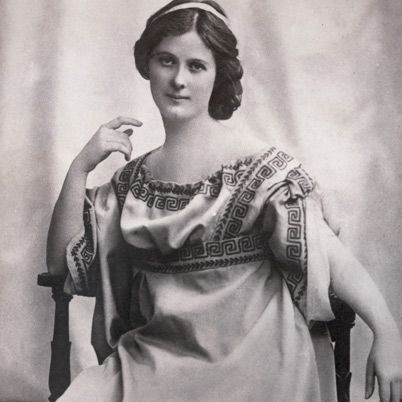
(1877-1927)
Who Was Isadora Duncan?
Isadora Duncan developed an approach to dance that emphasized naturalistic movement. She was a hit in Europe as a performer to classical music and opened schools that integrated dance with other types of learning. She later faced immense tragedy with the death of her children and spouse's suicide.
With accounts varying, Isadora Angela Duncan was born circa May 26, 1877 (the date on her baptismal certificate; some sources say May 27, 1878), in San Francisco, California. Her parents divorced when Duncan was an infant, and she was raised by her mother, Dora, a piano teacher with a great appreciation for the arts. At the age of 6, Duncan began to teach movement to little children in her neighborhood; word spread, and by the time she was 10, her classes had become quite large. She requested to leave public school so that she, along with older sister Elizabeth, could earn income from teaching. Duncan subsequently received tutelage from poet Ina Coolbrith.
Success in Europe
Duncan lived in Chicago and New York before moving to Europe. There with brother Raymond she studied Greek mythology and visual iconography, which would inform her sensibilities and general style of movement as an artist. Duncan came to look at ancient rituals around dance, nature and the body as being central to her performance ideology.
Barefoot and clad in sheaths inspired by Greek imagery and Italian Renaissance paintings, Duncan danced her own choreography in the homes of the financially elite before becoming a major success in Budapest, Hungary, having a sold-out run of shows in 1902.
She embarked on successful tours, becoming a European sensation honored not only by enraptured audiences, but by fellow artists who captured her image in painting, sculpture and poetry. Duncan's style was controversial for its time, as it defied what she viewed as the constricting conventions of ballet, placing major emphasis on the human female form and free-flowing moves. Duncan's achievements and artistic vision would lead her to be called the "Mother of Modern Dance"—a moniker also shared by a successor of sorts, Martha Graham.
Schools and 'Isadorables'
Duncan defied social custom in other ways and was viewed as an early feminist, declaring that she wouldn't marry and thus having two children out of wedlock. Duncan also founded dance schools in the United States, Germany and Russia, with her dance students dubbed the "Isadorables" by the media. She developed a particularly affinity for the latter country and its revolutionary movements, and in the early 1920s received patronage from Vladimir Lenin for her teaching work.
Difficult Personal Life
Duncan faced horrific tragedies in her life, with her two children and their nanny drowning in 1913 when the car they were in fell into the Seine River. Later, Duncan married poet Sergey Aleksandrovich Yesenin in 1922, favoring a legal union to allow him travel to the United States. However, the couple was ostracized due to anti-Bolshevik paranoia, and Duncan declared that she would not return to America. The marriage wouldn't last, with Yesenin suffering from severe mental health issues and committing suicide in the mid-1920s.
Duncan struggled emotionally during her later years. She died in Nice, France, on September 14, 1927, when her scarf got caught in the back wheels of an automobile in which she was riding.
The same year of her death, Duncan's autobiography was published, My Life , which has gone on to become a critically acclaimed work. Over the years, many other books, along with several films, have offered accounts on Duncan's life and art.
QUICK FACTS
- Name: Isadora Duncan
- Birth Year: 1877
- Birth date: May 26, 1877
- Birth State: California
- Birth City: San Francisco
- Birth Country: United States
- Gender: Female
- Best Known For: Isadora Duncan was a trailblazing dancer and instructor whose emphasis on freer forms of movement was a precursor to modern dance techniques.
- Writing and Publishing
- Theater and Dance
- Astrological Sign: Gemini
- Death Year: 1927
- Death date: September 14, 1927
- Death City: Nice
- Death Country: France
CITATION INFORMATION
- Article Title: Isadora Duncan Biography
- Author: Biography.com Editors
- Website Name: The Biography.com website
- Url: https://www.biography.com/artists/isadora-duncan
- Access Date:
- Publisher: A&E; Television Networks
- Last Updated: July 28, 2020
- Original Published Date: April 2, 2014
- My art is just an effort to express the truth of my Being in gesture and movement. It has taken me long years to find even one absolutely true movement.
- She is coming, the dancer of the future: the free spirit, who will inhabit the body of new women; more glorious than any woman that has yet been; more beautiful than all women in past centuries: The highest intelligence in the freest body.
- Far from wishing to develop theatre dancers, I have only hoped to train in my school numbers of children who through dance, music, poetry and song would express the feelings of the people, with grace and beauty.
- The true dance is an expression of serenity; it is controlled by the profound rhythm of inner emotion. Emotion does not reach the moment of frenzy out of a spurt of action; it broods first, it sleeps like the life in the seed, and it unfolds with a gentle slowness.

Michael Jackson

Biography: You Need to Know: Maria Tallchief

Patrick Swayze

Laverne Cox

Ariana DeBose

Bill "Bojangles" Robinson

Alvin Ailey
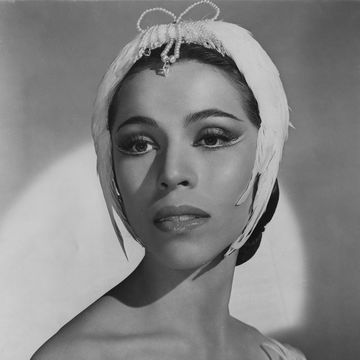
Maria Tallchief
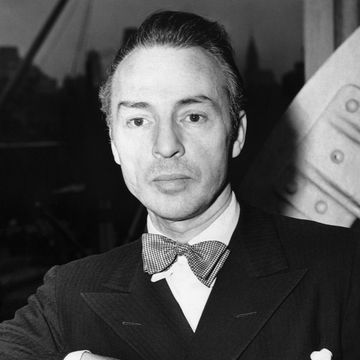
George Balanchine
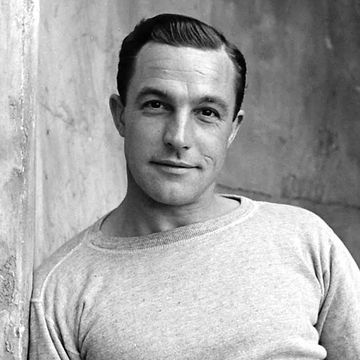
- Skip to main content
- Keyboard shortcuts for audio player
Book Reviews
A dancer is unstrung by grief in 'isadora'.
Michael Schaub

Buy Featured Book
Your purchase helps support NPR programming. How?
- Independent Bookstores
In her autobiography, My Life , the legendary American dancer Isadora Duncan wrote, "The finest inheritance you can give to a child is to allow it to make its own way, completely on its own feet." She would never have the chance to give any kind of inheritance to her three children; they all died before she was killed in a freak accident in 1927. She was either 49 or 50.
Duncan's life was obviously a tragic one, and what might have been her most difficult year — the period between the deaths of her first two children in a car accident and the birth of her third — form the basis of Amelia Gray's breathtaking new novel, Isadora . It's a stunning meditation on art and grief by one of America's most exciting young writers.
Gray sets the tone of Isadora early on, with a brief introduction that sets the scene, describing Duncan's charmed life just before the death of her children: "An energy builds around her, a feeling that fascinates her and informs her work. She anticipates that an artistic revolution will emerge from that energy, and that she will stand at the forefront of an era devoted to the sublime. Unfortunately, she is mistaken."
As the novel opens, Duncan is in shock, and her partner Paris Singer — son of sewing machine magnate Isaac, and father of one of Duncan's children — is left to arrange the children's funeral. Duncan finds herself unable to handle her sudden loss, at one point thinking, "The keening scream spread swiftly from my body to the walls and floor to make a residence of sound, echoed through my empty core, my ribs a spider's web strung ragged across my spine, a sagging cradle for the mess of my broken heart."

'Gutshot' Is Gloriously Grand Guignol

Murky 'Threats' Will Get Inside Your Head
At Singer's insistence, Duncan embarks on what's meant to be a restorative trip to the Greek island of Corfu, accompanied by her sister Elizabeth, also a dance instructor. But it does little to calm her, and soon she takes ill, unable or unwilling to leave her bed. Elizabeth grows exasperated with her sister, whose stubbornness has always rankled her: "If anyone could make herself sick by willing it, it was Isadora. She carried such a sullen power over her own body, the despotic ruler of a nation constantly on the brink of civil war." When Duncan finally makes it back to her Paris home, after visiting a friend in Tuscany, she has eaten her children's ashes; she's emotionally battered, unstable and unpredictable.
The novel concludes with an ending so mind-bogglingly sad, it would have seemed unnecessary and unreal if it hadn't actually happened. But Gray handles it beautifully — she doesn't insulate her readers from the cruelties of grief, but she's never exploitative and she never uses cheap pathos. "I always thought that if I suffered enough in service of Art, if I laid down my life to please the world, I could live in peace," Duncan reflects shortly after the death of her children. "Now I know that the world will consume everything in its path. Art is not even an appetizer to the horrors of the world. The world consumes horror itself and savors it and is never sated."
While the book is, for obvious reasons, frequently depressing, Gray manages to work in some genuinely funny moments that don't cheapen the novel's tone. Some of these are in the conversations between the Duncan siblings; others come in the form of the explanatory headings before each chapter, like "After a few featureless weeks, Isadora remains ill enough for her siblings to almost worry" and "Max attempts to practice the life of the mind in order to forget he is trapped with Elizabeth and her terrible family."
Gray's portrayal of Duncan is a remarkable one. While she's certainly sympathetic, she doesn't shy away from Duncan's not unsubstantial mean streak — she could be a "hissing flirt" who would instigate fights and "shrug off blame" whenever she felt like it. Duncan the character cops to this at one point, while still managing to portray herself as a victim: "I could lay a powerful curse indeed, for the beaten dog has the gravest bite."
Gray is a gutsy, utterly original writer, and this is the finest work she's done so far. Isadora is a masterful portrait of one of America's greatest artists, and it's also a beautiful reflection on what it means to be suffocated by grief, but not quite willing to give up: "In order to understand the greatest joys of life, you must do more than open yourself to its greatest sorrows. You must invite it to join you in your home and beguile it to stay."
- North America
- Ladies We Love Isadora Duncan
Isadora Duncan, The Tragic Life Of The World's Greatest Dancer

Isadora Duncan grew up in the Bay area under the guidance of her mother, a piano teacher and avid believer in the arts. Duncan adopted her own form of expressive movement by age ten, and determinedly refused vaudeville gigs as a young adult to earn recognition for her own choreography. She rejected social norms—both onstage and off— which earned her an eccentric reputation, but also a lasting legacy. Here’s a tribute to San Franscisco’s most famous dancer.

Duncan was born in 1877 at 501 Taylor Street , San Francisco, CA, in what is now known as the Tenderloin . Duncan’s father left a few years after her birth, leaving Dora Duncan to raise four children. The Duncans relocated to Oakland and lived a Bohemian lifestyle while running Dora’s music school. It was there that Isadora first began teaching dance classes.

Fitting the Duncan’s offbeat lifestyle, partially motivated by Greek revivalism, Isadora did not teach classical ballet , which dominated the dance scene at the time. Instead, she developed her own technique with loose tunics, bare feet, and flowing hair; all aspects inspired by Greek sculpture and philosophy .
As she matured, Duncan sought liberation from both the rigid ballet world and the restricting views of womanhood. Her movement was entirely intuitive, and her costume without a corset: a shocking sight at the time. Duncan’s work was seen as rather eccentric and was not initially accepted in America.

However, Duncan was unwavering, and traveled to Chicago and New York throughout her teenage years to work in various plays and vaudeville shows for money. She also performed her own work for garden parties as a “California novelty,” but still faced criticism. Duncan returned to San Francisco in 1896 to dance in A Midsummer Night’s Dream at the Baldwin Theater, which stood where the Flood Building is now standing.

Shortly after, propelled by her unconventional nature, Isadora left the vaudeville circuit. Seeking a new artistic climate she traveled to Europe , where Duncan quickly earned followers. Her first fan base began in London in 1900, where she performed in the homes of upper class ladies. She quickly ended up on stages in Paris , and was able to visit her beloved Greece .

Finally enjoying success, Isadora founded her first dance school in 1905 outside of Berlin , to train dancers for a company, dubbed ‘The Isadorables’. By 1907 Duncan had become an international celebrity. In tandem with her revolutionary movement, she utilized composers such as Beethoven, Chopin and Wagner, rather than popular jazz music. Duncan’s recognition led to performances for European royalty, as well as Vladimir Lenin .

Duncan met an untimely death in 1927, when her quintessential scarf was caught in the hubcap of a moving automobile. The San Franciscan icon left behind a legacy. Duncan’s radicalism, intuition and inspirational dancing contributed to central themes of 20thcentury dance. Furthermore, Duncan single-handedly proved that new forms of dancing could be appreciated. Duncan’s bold work ultimately helped pave the way for modern dance pioneers to come.

Today, Lori Belilove, a third generation Duncan dancer, and her ‘Belilovables’ preserve the work of Duncan through the Isadora Duncan Dance Foundation and the Isadora Duncan Dance Company . See for yourself what Duncan was about, and check out their performance schedule here .
Since you are here, we would like to share our vision for the future of travel - and the direction Culture Trip is moving in.
Culture Trip launched in 2011 with a simple yet passionate mission: to inspire people to go beyond their boundaries and experience what makes a place, its people and its culture special and meaningful — and this is still in our DNA today. We are proud that, for more than a decade, millions like you have trusted our award-winning recommendations by people who deeply understand what makes certain places and communities so special.
Increasingly we believe the world needs more meaningful, real-life connections between curious travellers keen to explore the world in a more responsible way. That is why we have intensively curated a collection of premium small-group trips as an invitation to meet and connect with new, like-minded people for once-in-a-lifetime experiences in three categories: Culture Trips, Rail Trips and Private Trips. Our Trips are suitable for both solo travelers, couples and friends who want to explore the world together.
Culture Trips are deeply immersive 5 to 16 days itineraries, that combine authentic local experiences, exciting activities and 4-5* accommodation to look forward to at the end of each day. Our Rail Trips are our most planet-friendly itineraries that invite you to take the scenic route, relax whilst getting under the skin of a destination. Our Private Trips are fully tailored itineraries, curated by our Travel Experts specifically for you, your friends or your family.
We know that many of you worry about the environmental impact of travel and are looking for ways of expanding horizons in ways that do minimal harm - and may even bring benefits. We are committed to go as far as possible in curating our trips with care for the planet. That is why all of our trips are flightless in destination, fully carbon offset - and we have ambitious plans to be net zero in the very near future.

See & Do
Off-the-grid travel destinations for your new year digital detox .

Places to Stay
The best accessible and wheelchair-friendly hotels to book in california.

The Best Hotels in Santa Maria, California

Guides & Tips
The solo traveler’s guide to lake tahoe.

The Best Family-Friendly Hotels to Book in San Diego, California

The Best Beach Hotels to Book in California, USA

The Best Hotels to Book in Santa Ana, California

The Best Hotels With Suites to Book in San Francisco

A Solo Traveler's Guide to California

The Best Vacation Villas to Rent in California

Not-to-miss activities in San Luis Obispo County

The Best Hotels to Book in Calistoga, California
Culture trip spring sale, save up to $1,100 on our unique small-group trips limited spots..

- Post ID: 704813
- Sponsored? No
- View Payload
The Tragic Story Of Dancer Isadora Duncan
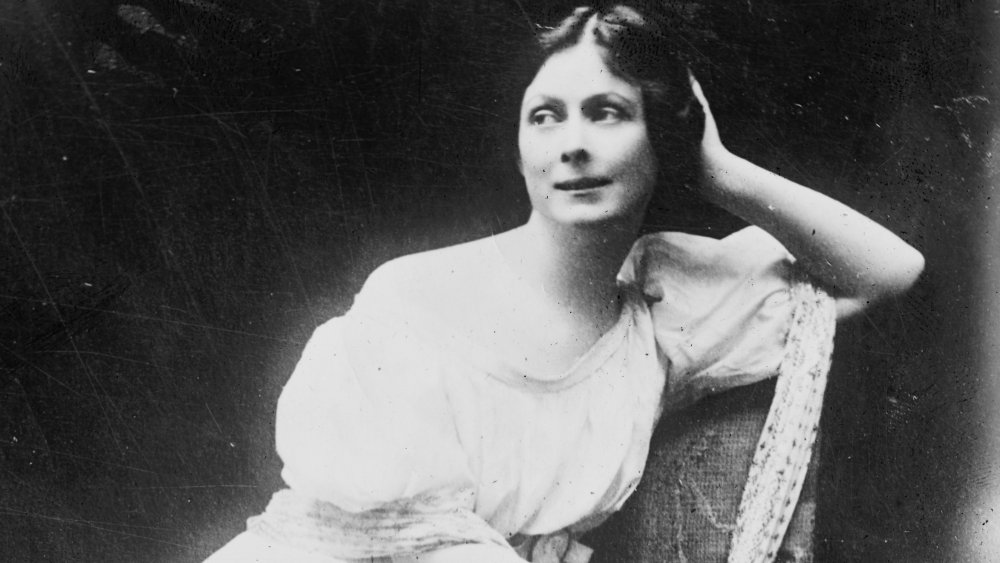
It can be difficult to really get the full scope of Isadora Duncan's tumultuous life. She was a pioneering dancer with an outsized personality. Duncan was someone who pushed boundaries and changed the face of her art, which was considered so shocking that it put her at the center of gossip and frayed friendships. Even her sudden death in an automobile accident seems like a sad end that is still in tune with her often sudden, impulsive life. She was a spectacle.
Duncan didn't get there easily. Her story is rife with tragedy from the very beginning. According to Biography , she was born in 1877, to a family on the brink of collapse. Her parents divorced soon after Isadora was born, broken apart by financial deception and personal dalliance. Her single mother struggled to keep the family afloat, while Isadora eventually dropped out of school at a young age.
Through determination and skill, she found a place for herself in the dancing world, but at the cost of raising many eyebrows and shocking quite a few traditionalists. Yet, tragedy still dogged her, affecting not just the freethinking, free-loving Isadora Duncan, but her family and friends as well.
Isadora Duncan grew up amid family strife
Isadora Duncan's troubles started not long after her birth in 1877. She was the youngest of four children born to Joseph Duncan and Mary Gray. As related by Time and the Dancing Image , Joseph was an inventive man, working variously as a newspaper publisher, real estate agent, and banker. Unfortunately, he was also a cheat. Shortly after Isadora made her first appearance, Mary discovered that he had been using bank money to finance his own private stock investments. Though he escaped legal consequences, it was a close call that could have landed Joseph in jail.
Joseph Duncan was also apparently a serial cheater, a fact that was clear to his wife. Mary divorced him and took the children to live in Oakland and San Francisco. Between taking on work as a seamstress and piano teacher, Mary likely fretted about the constant bills and rent payments that were always due. According to The Journal of Religion , she also read aloud texts written by atheist intellectual Robert Ingersoll, whose freethinking ways may very well have influenced Isadora as she grew into adulthood.
For her part, Isadora Duncan began to work at a young age. She dropped out of school by age 10, per the Isadora Duncan Dance Company. Along with her sister, Elizabeth, she earned money by teaching dance to local children. This is apparently where she turned rather sour on ballet, once saying it was little more than "affected grace and toe walking."
Duncan butted heads with the ballet establishment
By the time she had turned 18, Isadora Duncan was ready to leave California, The New York Times reports. With her mother in tow, she made her way east and joined stage director Augustin Daly's company. She thought that she was ill-used, even as a relatively new member of Daly's group. She got pretty bold when she reportedly asked Daly, ”What's the good of having me here, with my genius, when you make no use of me?” Eventually, she moved to New York and found some success as a dancer, though her reputation didn't really take off until she moved to Europe in 1899. There, her boundary-pushing began to draw interest. She soon began performing to sold-out crowds.
Her sense of self was blatantly egotistical, but Duncan was primed to push back against the dancing establishment. To her mind, it had become overly conservative, a musty ode to the way things had always been. According to NPR , ballet has been around since the Renaissance . To Isadora Duncan's mind, the art of dance had only calcified since then. Things desperately needed to change. In her autobiography, My Life , her visit to Russia's Imperial Ballet School exemplified her feelings about the dance. "The great, bare dancing rooms [...] were like a torture chamber. I was more than ever convinced that the Imperial Ballet School is an enemy to nature and to Art."
Isadora Duncan's dance attire shocked audiences
Isadora Duncan's dance costumes used unstructured, free-flowing silhouettes that also emphasized the curves of the dancer. Nineteenth-century audiences who were used to the aesthetic of ballet were taken aback by what they saw. Then again, there were plenty of free-thinking, modern lovers of dance who were intrigued and perhaps a little titillated by Duncan's look.
This free love approach actually wasn't out of line with the history of dance, the National Museum of Women in the Arts reports. Ballet had already gained a bit of a racy reputation, with many assuming that the dancers were loose women benefiting from lecherous "patrons." Duncan, who generally wasn't bothered by petty concerns like conventional morality, actually updated the revealing ballet look. She became somewhat notorious for her Grecian-style dresses she wore during performances, made out of sheer fabric that clung to her form. For viewers used to the Victorian standard of dress, which often covered and restricted women's bodies, Duncan's fashion could be astonishing.
Duncan wasn't just doing this to shock people and gain notoriety. According to The New Research in Dress History conference , it was all part of her deeply-held beliefs about the importance of dance and self-expression. For her, dance could not develop and grow into a richer art form if its practitioners were always bound up in corsets and toe shoes. The barefoot, chiffon-wearing dancers of Duncan's work represented her drive to break dance out of its rut and into a brave new artform.
Duncan was probably bisexual in a homophobic time
The world of Isadora Duncan's time was not kind to LGBTQ people, though the situation may have been more complex than you think. The Victorians who preceded Duncan certainly had a complex view of same-sex love and attraction and often gave artists, in particular, a bit of a pass, the BBC reports. Yet, homophobia was still rampant. Pride celebrations would have been a wild, seemingly unattainable dream for anyone of the time. Gay people of this period were routinely ostracized, imprisoned, and subject to painful conversion therapies meant to turn them straight, History says.
Duncan, who routinely flouted social conventions throughout her life, carried on affairs with both men and women. As per the Advocate , her most well-known alleged affair, with writer and socialite Mercedes de Acosta, took place after Duncan's only husband, Russian writer Sergei Yesenin, had left her and then committed suicide. The pair had already known each other for some time, though it's unclear when, exactly, their physical relationship began.
According to That Furious Lesbian: The Story of Mercedes de Acosta , they first met in 1917. Isadora eventually wrote a poem about Mercedes, romantically referring to what she liked to do to the other woman's body. The pair also exchanged letters with each other, sometimes with overtly romantic sentiments. In other accounts, Mercedes more explicitly referred to what the two women did together to express their affection, making it clear that they were sexually and romantically entangled for a time.
Isadora Duncan was an outspoken communist
Though anti-communist sentiment would not be at its high in the U.S. until Senator Joseph McCarthy's peak in the 1950s , it still wasn't popular to proclaim communist sentiments in Isadora Duncan's time. For Duncan, her allegiance to the cause was yet another part of her beliefs that set her apart. The New York Times reports that, by the 1920s, Russian political thought was beginning to spread throughout the world. While some cottoned to their Communist ideals, others reacted with anti-Bolshevik sentiment.
In the introduction to her autobiography, My Life , it's reported that Duncan said her work would have been banned in the United States if she'd discussed her "Communist years" more openly. Yet, she did discuss it somewhat, writing that it was "No wonder that I felt inclined to become a Communist when I so often had exemplified for me the fact that for a rich man to find happiness was like Sisyphus trying to roll his stone uphill from Hell."
Other reports indicate that she wasn't shy about stating her commitment from the stage. As related in Dance and Politics , she once ended a performance by producing a red scarf and waving it about, saying "This is red! So am I!" Some accounts maintain that she also exposed herself in the same incident, but that may very well have been a rumor that played into Duncan's already larger than life persona and often scandalous behavior.
Duncan's children met a tragic end
Though she frequently shied away from social conventions like marriage, Isadora Duncan apparently wasn't against becoming a mother. She had three children, all out of wedlock, and appeared to have been a doting parent when she wasn't busy working and traveling. All of her children, however, were doomed to an unfortunate end.
Duncan's first child, Deirdre Beatrice, was the daughter of theater designer Gordon Craig, per Done Into Dance . Her second, Patrick, was the son of Paris Singer, himself the son of sewing machine tycoon Isaac Singer. Duncan skirted outright censure by saying that they were her adopted children, but she remained a single parent. Tragedy struck in 1913, when a car carrying the two children and their governess, Annie, accidentally drove into the River Seine in Paris. The driver survived, the San Francisco Call reported, but Patrick, Deirdre, and Annie drowned. Duncan was obliterated by grief.
After a 1914 affair with sculptor Romano Romanelli, Barefoot Dancer says, Duncan learned that she was pregnant. She happily accepted the news, believing that the new child was the spirit of Deirde or Patrick returning to her. In August 1914, she gave birth to a son who lived for only a few hours. "I believe that in that moment I reached the height of suffering that can come to me on earth," she later wrote.
Duncan's feminism put her at odds with society
The journal American Studies reports that Isadora Duncan's freewheeling aesthetic, both on and offstage, was all part of a greater artistic move towards self-expression, compared to the repressive, patriarchal attitudes of the Victorians. For Duncan, women were meant to move their bodies freely, without consideration for anything other than the higher pursuit of art. Things like traditional marriage and restrictive sexual conventions would only hold Duncan and other women back.
Surprisingly, Duncan, who would eventually become notorious not just for her free-flowing aesthetic, but also her dramatic personal life, wasn't keen on sexualizing her dance performances. Her body, and the bodies of her dancers, were instead meant to represent a whole artistic impression. They weren't mean to cater luridly to the male gaze as some earlier dancers were rumored to have done. In her 1903 lecture, " The Dance of the Future ," she said that her dancers "will dance not in the form of a nymph, nor fairy, nor coquette but in the form of a woman in its greatest and purest expression."
Duncan officially trained only female dancers. The assumption that her work could only be danced by women held strong for many decades after her death. In 1982, The New York Times reported on what was still the odd occurrence of a man dancing Duncan's choreography, more than 50 years after her passing.
Duncan's only husband mistreated and left her
In 1922, Isadora Duncan married poet Sergei Yesenin, who, at 26, was 18 years younger than the 45-year-old Duncan. It was to be a difficult relationship, though it was the only time the free-love Duncan had bothered to marry anybody.
According to The New York Times , the relationship was an utter disaster, almost from the very beginning. Yesenin spoke only Russian, while Duncan knew only a few words in his language. Yesenin also struggled with alcoholism, often becoming violent and abusive towards his wife. He reportedly embarrassed her in public, going so far as to say, "Woman very old!" when he was particularly upset with her. The pair moved to different locations across Europe, causing scenes wherever they went. Observers and friends noted the utter mess they left behind them, which often included damaged hotel furniture produced during yet another row between the couple.
According to the introduction to My Life , Yesenin had even thrown himself through a plate glass window once. Hounded by debt, they moved back to Russia, where Yesenin left Duncan after only nine months of marriage. "I married [her] for her money and for the chance to travel," he said, per The New York Times . Two years after the split, he was found in Leningrad's Hotel Angleterre, dead of an apparent suicide.
Friends grew sick of Duncan's shocking ways
As Isadora Duncan grew older, her oversized personality and impulsive ways grew harder to ignore. For her friends, Isadora's escapades and tragedies began to pile one upon the other, until a friendship with her began to seem more like a job than a pleasure. The New York Times maintains that she had grown "sexually rapacious" and emotionally sloppy. Friends stepped in to support her, but as the drama continued, many stepped away.
A 1927 New Yorker feature on her unflinchingly illustrates some of the changes faced by Isadora Duncan. "Her flesh is worn, perhaps by the weight of laurels," says the profile, perhaps trying to make up for the harsh words by throwing in some accolades. Ultimately, however, her ambitions and her life were too grand for the simple friendships enjoyed by others. "She has had friends," wrote the New Yorker , but "what she needed was an entire government."
Isadora Duncan's later life was plagued by debt and personal drama
Isadora Duncan's free-spirited life eventually left her with heavy debts and a trail of broken or complicated relationships. She moved continually, sometimes staying in apartments paid for by her remaining friends, according to The New York Times . When she had money, Duncan seemed unable to think of the future, and instead spent her constantly evaporating funds on grandiose nights out and indulgent purchases. When the money ran out, she wasn't above skipping town or, on one occasion, somehow getting a railroad porter to pay for her deluxe dinner.
Her last few years were also peppered with sexual relationships that never seemed to morph into anything solid. She had affairs with men and at least one woman, Mercedes de Acosta. By 1927, the New Yorker reported, she had begun to talk of writing her memoirs. Surely, she must have reasoned, a life as dramatic and uncompromising as hers would make for a compelling read. Isadora Duncan and her overburdened friends must have also hoped that it would make her enough money to stabilize her careening life.
Duncan struggled with alcohol
As she grew older, Isadora Duncan became notorious for her public drunkenness, though her most loyal friends often insisted that she was fine. Others were not so charitable. A young George Balanchine, quoted in The New York Times , saw her perform in the 1920s and came away thoroughly unimpressed. He viciously said that she was "a drunken, fat woman who for hours was rolling around like a pig."
Another observer, choreographer Frederick Ashton, also saw that she was drinking heavily during that decade, The Guardian reports. It was so bad, he reported, that her stage performances were beginning to visibly suffer as Duncan deteriorated. Soon enough, she became notorious for getting soused in public and embarrassing herself.
Others took advantage of Isadora Duncan's propensity for getting tipsy. According to Zelda Fitzgerald , when Duncan was carrying on at a Paris cafe, Zelda used the distraction to steal a pair of car-shaped salt and pepper shakers. Zelda herself wasn't a fan of Isadora, who may have carried on an affair with Zelda's husband, the writer F. Scott Fitzgerald. Reportedly, Zelda was so furious when he paid court to Duncan at yet another cafe that she flung herself down some nearby stairs to draw his attention. Isadora Duncan, it seems, couldn't help but attract dramatic people to her side, whether they wanted to be there or not.
Isadora Duncan met a sudden and shocking end
By the time she met her final day, Isadora Duncan had already dealt with failed relationships, tragic deaths, financial instability, and what appeared to be a growing problem with alcohol. Yet, it was to be a sports car that spelled her ultimate doom .
It was September 14, 1927. According to History , Isadora was in Nice, France. She was dressed to impress, or at least dressed dramatically, with an enormously long red scarf trailing from her neck. A newspaper account from the time claimed that the color of her neckwear was a reference to her communism. Either way, it's clear that Duncan wanted to make an impression on the people who were watching the still-famous, if somewhat fading, American dancer.
Duncan reportedly told her friend, Mary Desti, "Farewell, my friends. I go to glory!" However, The New York Times reports that writer Glenway Wescott later said that Desti confided in him, admitting that Isadora said, "I am off to love." Desti found this embarrassing, as it seemed like Duncan was yet again telling everyone about her sexual escapades. As the car began to move forward, one end of the scarf snaked down and around the rear axle and wheel. In a freak accident , Isadora Duncan was jerked from the open cab and briefly dragged along the cobblestones before the driver stopped. She died almost instantly of a broken neck. Later, writer Gertrude Stein, apparently unaffected by Duncan's abrupt demise, mordantly remarked that "affectations can be dangerous."

Turning ancient tales into modern-day escapades!
Traveling is a great opportunity to experience a different culture, learn a new language, or access information you can’t find in the books.
Travel Tips
Travel is not an expense, it is an investment, here you will find the best travel tips and destinations, to inspire you in your journey.
Versão em Português
Não fala Inglês? Sem problemas, aqui você consegue acessar essa mesma versão do blog, em língua Portuguesa! EM CONSTRUÇÃO.

Who is Isa?
Hi, I’m Isadora, a Brazilian-born who decided to fully embrace my school nickname Dora the Explorer, and travel the world.
Latest Posts

3 Days in Athens Itinerary for First-Timers (+Tips)

A Visit to Ulster Folk Museum: Exploring Northern Ireland’s History

Safety in Naples: Is Naples safe for tourists?
Top destinations, most popular.

2 Days in Naples Itinerary: What to See in Naples, Italy (+ Map & Tips)
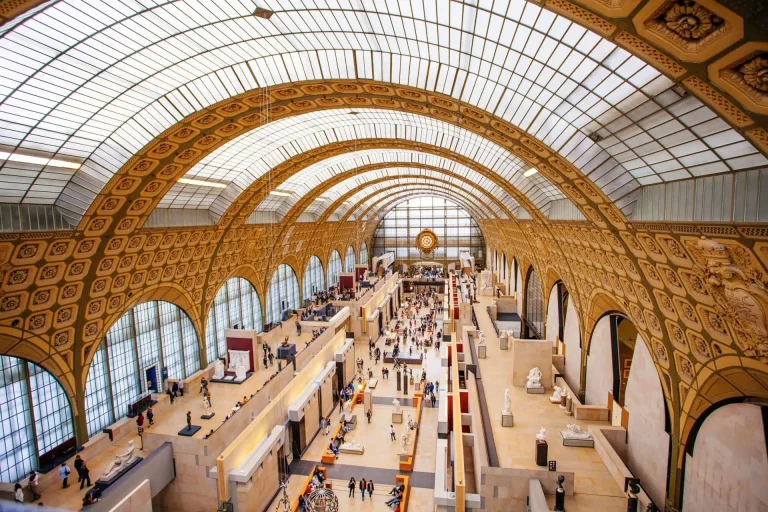
20+ Famous Paintings in the Musée d’Orsay you shouldn’t miss

What to do During a Long Layover in Madrid (2024)

3 Days in Rome Itinerary: Things to Do in Rome in 3 days

Athens Riviera: The Best Beaches in Athens to Visit

15+ Louvre Museum Famous Masterpieces You Must See
Travel Advisor

Isadora Amorim
- New York City ,
- City Travel ,
New York, New York
Languages spoken
English, Portuguese, Spanish


Get in touch with Isadora
Reach out to customize and book your own experience. Or, just to chat about travel in general.
You can normally expect a response from Isadora within a business day or so. You’ll also be subscribed to our travel newsletter (you can unsubscribe at any time).
Your message has been sent to Isadora !
Learn more about what to expect when working with an advisor.
Profile details
A Brazilian, New York City-based traveler who spends too much time creating the most creative itineraries all over the world.
Follow Isadora
Travel style.
Former model that has traveled the world for work, but also for fun while on a budget. I love creating budget-friendly itineraries or ones for luxurious adventures. I believe we should all be traveling and getting to know the world, no matter what your budget is.
Favorite hotels
Copacabana palace, a belmond hotel, rio de janeiro.
This Art Deco icon reigns supreme over its namesake beach, an unmatched destination for tapping into the spirit of Rio’s beach culture.
$100 food / beverage credit.
Breakfast daily.
Upgrade & extended check-in/out whenever possible.
Kenoa Exclusive Beach Spa & Resort
A luxurious and secluded beachfront oasis offering unparalleled relaxation, stunning natural surroundings, and world-class spa experiences.
$100 hotel / resort credit.
Isadora 's travel photos
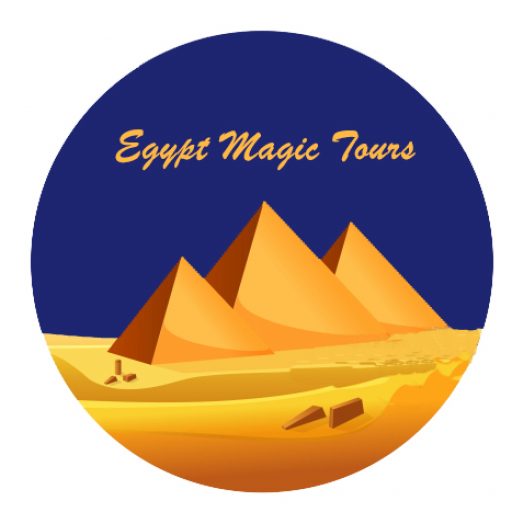
Isadora, an 18-year-old Egyptian girl of great beauty, lived in Egypt in the second century AD, specifically to the year 120 AD in the era of Emperor Hadrian (117 AD-138 AD). The cemetery is built of burnt mud bricks, and its colour is dark, and in most parts, it is painted white from the outside and the inside, and in front of the entrance, there is an altar topped by a pyramidal crown at the four corners, so who is the owner of the tomb? Her mummy lay on a luxurious funerary bed consisting of a tall building of mud and topped with a model in the form of a shell covered with plaster. This mummy belonged to a beautiful girl nicknamed the martyr of love or the lover Isadora.. her name means “the gift of Isis”, as it confirms that true love does not even die. If it ends in a tragic end, like most stories Isadora, the daughter of a Greek family, lived in Antiniopolis (now Sheikh Ubadah) on the eastern side of the Nile. (Thoth) is the symbol of wisdom and the pen, and the god of the moon in ancient Egypt, and the moon was casting its silver shadows on the Nile page when she was passing by boat to the west side, so she was struck by the magic of love and beauty, as she is in the first steps of young femininity after she crossed the age of sixteen, and as soon as she put her feet on the ground and joined the party She met love for the first and last time in her life when Cupid’s arrows hit her. Her eyes fell on the Egyptian officer Habi, who was living on the western side of the Nile in the city of Khemnu (currently Ashmounin) and were one of the guard forces in the city and then considered an ordinary person of the Egyptian people and did not It was not from the people. He was not from an aristocratic family like hers, for the heart and love did not know social differences. Hence, they met, she crosses the river to the west where the city of (Khmenu) to spend a happy time with her lover, and on other days he creates conditions to meet her beside the wide gardens surrounding the palace of the prince and her father. And this tender love between the two lovers continued for about three years until her father discovered this relationship, prevented her from meeting Habi, and ordered his guards to watch her so that she would not meet her lover. She deceived the guards and crossed to the west where the lover was waiting for her. She spent hours with him of soliloquy and happiness of the heart. Upon her return, she imagined that this was the last meeting with her lover and that the happy world had leaked from her. She found that she threw herself in the middle of the holy river to be her last moments in life is to meet the beloved, And she dived into it to be the first martyr of love in Pharaonic history. Her father deeply regretted what he had done to his daughter, so he grieved and agonized over her death after depriving her of the right to love and life and decided to build her a grave worthy of her as the daughter of an emir. From the inside, she has a funeral bed for her to sleep on. The artist had engraved on its two front sides two long elegies in the Greek language, the likes of which we have not been familiar with before in any other funerary building without Greek on the walls of a cemetery, which he started by saying: .. and the fresh flower… that withered in the spring of life… my pure angel who left… without saying goodbye…) There is a dispute between the archaeologists about who put the two epitaphs, her father or her lover. Her lover used to visit her every night, and release incense to her and light a candle inside her tomb so that her soul would not remain alone, and so is his love for her, and the people confirm seeing shadows of two people sitting next to each other on lunar nights. Dr Taha Hussein, the dean of Arabic literature, took care of the place and had a special break there for three months in the winter, away from the hustle and bustle of life. The secret of his love for this place was “Isadora.” She was the focus of characters in his stories, and the story of Doaa Al-Karwan was the main character, and he used to release incense in her grave and called her “the martyr of love” for holding on to her lover and committing suicide by drowning, in the Nile River, in protest of her father’s refusal to marry her lover Isadora was in the eighties on her bed without the glass and the shroud, but the Germans wrapped her in a white shroud and put her inside a glass tomb to preserve her more. There is a possibility that the girl was suffering from gigantism, where the organs grow, the heart muscle fails, and water forms on the lungs, but it is impossible to detect this, as hormone testing is done only with liquid blood and the cause of death has changed. Her heart could not swim and sink in the waters of the Nile.
egyptmagictourscom
Comment (0).
Select User Type
Reset Password
Enter the e-mail address associated with the account. We'll e-mail a link to reset your password.
- Log in/Sign up
ISADORA TRAVEL
Latest events, corporate grouping user contributed.
Problem/question about this data? Click here
For access please Log in / Sign up

Royal Esadora Nile cruise
- Description
- Online Booking
- Write a Review
Age of Children
Royal esadora nile cruise prices and online booking.

Royal Esadora Nile cruise booking, prices, reviews, itineraries
Royal Esadora Nile cruise also known as Orbital Royal Esadora and Esadora II. In fact, MS Royal Esadora Nile cruise features 58 cabins and 4 suites featuring Juliet balcony. Moreover, MS Royal Esadora cruise launched in March 2006 and renovated in 2009. The Nile cruise ship is a superior 5 stars floating hotel over the Nile. In fact, Royal Esadora cruise features large public areas and a good range of facilities. The main restaurant serves a buffet with international and local cuisine. Moreover, the restaurant serves the breakfast, lunch and dinner meals daily. Lightweight and informal summer clothes are the norm during the day. In fact, the shorts and t-shirts are acceptable during the day.
In the evening, informal smart or casual attire expected. MS Royal Esadora also features a large modern bar lounge. In fact, this bar lounge has panoramic views which allows you to admire the beauty of Egypt treasures. Moreover, MS Royal Esadora Nile cruise ship also features sundeck with bar and a swimming pool. The Nile cruise ship also features Spa room, Beauty salon, gift shop and offers laundry service. MS Royal Esadora Nile cruise offers 3 and 7 nights Nile cruise program from Aswan. Moreover, the cruise ship also offers 4 and 7 nights Nile cruise program from Luxor.
Accommodation:
- 35 twin cabins.
- 15 double cabins.
- 08 interconnected cabins.
Guest Cabin Facilities:
- Air conditioning.
- Mini bar and fridge.
- Satellite TV.
- Bathroom and bath shower.
- Safe deposit box.
- International telephone.
- Juliet balcony.
- 220 V Electricity.
- 8 Connected cabins.
- Suites have Jacuzzi and DVD.
MS Royal Esadora Nile cruise Facilities & Services:
- Main restaurant.
- Air conditioned bar.
- Lounge with dance floor.
- Beauty salon.
- Sun deck with bar.
- Massage room.
- Boutique and gift shop.
- 24 hours room service.
- Laundry service.
- Internet and fax facilities.
- Swimming pool.
Sailing Schedule:
- 04 Days / 03 nights Ex Luxor every Friday.
- 05 Days / 04 nights Ex Aswan every Monday.
- 08 Days / 07 nights Ex Luxor every Friday.
- 08 Days / 07 nights Ex Aswan every Monday.
Tour itineraries details:
- 3 nights Nile cruise itinerary
- 4 nights Nile cruise itinerary
- 7 nights cruise itinerary Ex Luxor
Upon arrival Aswan airport, there will be a meeting and assist by our representative. And then, there will be also a transfer to MS Royal Esadora Nile cruise by private coach. In fact, the embarkation on the cruise will be before the lunch. And then, you will get the lunch on the cruise board. The time will be at leisure till afternoon. And then, we will sail by traditional Nile boat on the Nile river. In fact, the sailing will be along the shores of Elephantine Island . And then, you will be back to the cruise for afternoon tea and coffee. In fact, the dinner and overnight will be also on the cruise board.
** Optional Tour: There will be an excursion to Abu Simbel temples . In fact, the excursion will be either by private coach or by domestic flight.
Abu Simbel twin temples located about 300 km southwest of Aswan. In fact, the complex is part of the UNESCO World Heritage Site. It known as the “Nubian Monuments” which run from the complex downriver to Philae. In fact, The twin temples carved out of the mountainside. It was during the reign of Pharaoh Ramses II in the 13th century BC. Furthermore, the temples erected to commemorate his alleged victory at the Battle of Kadesh. The complex relocated in its entirety in 1968. In fact, it is now on an artificial hill. Moreover, the complex is high above the Aswan High Dam.
The breakfast will be also on Royal Esadora Nile cruise board. Today, we will visit Aswan High Dam which built in 1960. In fact, the dam contains 18 times the material which used in the Great Pyramid of Giza. Moreover, the dam is 11,811 feet long. Furthermore, it is 3215 feet thick at the base and 363 feet tall. And then, we will proceed to visit the Unfinished Obelisk . The obelisk made of the red granite which used for the ancient temples and colossi. In fact, the granite brought from quarries in the Aswan area. The obelisk weighs more or less than 2.3 million pound. And then, we will visit the beautiful Philae temple. In fact, the temple risen from the water of the Nile River.
Then, we will be back to MS Royal Esadora Nile cruise for taking the lunch while sailing to Kom Ombo. Once we arrive, we will visit the Ptolemaic temple of Sobek and Haroeries. And then, we will return back to the Nile cruise. Relax on the sun deck and watch primitive villages on the banks of the river glide. In fact, the tea and coffee served in the early evening on the cruise board. While sailing to Edfu, we will enjoy a sumptuous oriental dinner on the cruise board. In fact, the dinner includes dance all night away. Moreover, the dinner also includes Egyptian folklore Party. The overnight will be also on the cruise board.
Today, the breakfast will be also on MS Royal Esadora Nile cruise board. This morning, we will visit the beautiful preserved Edfu temple. In fact, the temple also known as Horus temple, the Falcon God. Moreover, the temple built in 237 BC during the reigns of six Ptolemy’s. Furthermore, the temple indeed is the best temple which preserved in Ancient Egypt. Moreover, the temple is the second largest after Karnak temple. In fact, Horus temple built from sandstone blocks. The huge Ptolemaic temple constructed over the site of a smaller earlier temple. In fact, Horus temple oriented east to west towards the Nile river.
The later structure of the temple faces north to south. It leaves the ruined remains of the older temple pylon to see on the east side of the first court. In fact, little known about the first Horus temple. An inscription shows that New Kingdom rulers Seti I, Ramses II and III did building work there. And then, we will return back tho the cruise for taking the lunch on the cruise board. Then, we will sail to Luxor in this day. While sailing, you will get the tea and coffee on the cruise board in the early evening. In fact, the dinner and overnight will be also on the cruise board.
We will take the breakfast today also on the MS Royal Esadora Nile cruise. And then, we will disembark from the cruise. Today, we will we cross to the west bank of the Nile to visit the Colossi of Memnon. In fact, they are two massive stone statues of Pharaoh Amenhotep III. Moreover, they stood in the Theban necropolis for the past 3400 years since 1350 BC. It was across the River Nile from the modern city of Luxor. And then, we will go to the Valley of the Kings and the Valley of the Queens. In the valley of the queens, we will visit Hatshepsut temple. The temple located beneath the cliffs at on the west bank of the Nile. In fact, it is near the Valley of the Kings in Luxor.
The mortuary temple dedicated to the sun god Amon-Ra. In fact, the lunch today will be at local restaurant on your own. And then, we will visit the awe inspiring Luxor temple. In fact, the temple founded in 1400 BC and built with sandstone block from an area in Aswan. The area located in fact in South Western Egypt. And then, we will continue to visit Karnak temple. The temple houses a vast mix of decayed temples, chapels, pylons and other buildings. Moreover, the building at the complex began in the reign of Sesostris I in the Middle Kingdom. And then, there will be a transfer to Luxor airport to catch your flight.
Once you arrive Luxor airport, our representative will meet and assist you. And then, there will be a transfer to MS Royal Esadora Nile cruise. In fact, the embarkation on the Nile cruise board will be before the lunch. And then, you will take the lunch meal on the cruise board. Today, we will start the tour program by visiting Luxor temple. The temple founded in 1400 BC and built from sandstone blocks. In fact, these sandstone blocks brought from the south western of Egypt. And then, we will visit Karnak temple which features a vast mix of decayed temples and chapels. Moreover, the temple also features pylons and other buildings. And then, we will be back to the cruise. The dinner and overnight will be also on the Nile cruise board.
The breakfast meal today will be also on the MS Royal Esadora Nile cruise board. And then, we will cross to the west bank of the Nile to visit the Colossi of Memnon. In fact, the colossi are two massive stone statues of Pharaoh Amenhotep III. Furthermore, the statues stood for the past 3400 years in this necropolis. Moreover, they are across the Nile River from the modern city of Luxor. And then, will go to the Valley of the Kings and the Valley of the Queens. There, we will visit Hatshepsut temple. In fact, the temple located under the cliffs on the west bank of the Nile.
Moreover, the temple is near to the Valley of the Kings in Egypt. And then, we will return back to the cruise. In fact, you will take the lunch meal on the cruise board while sailing to sailing to Edfu. The dinner and the overnight will be also on the cruise board.
In fact, the breakfast today will be also on the MS Royal Esadora Nile cruise board. And then, we will visit the beautiful preserved Horus temple. In fact, it indeed the best preserved of all Egyptian temples which built by the Ptolemy’s. And then, we will be back to get the lunch on the cruise board. In fact, you will take your lunch while sailing to Kom Ombo. Over there, we will visit the temple of Sobek the crocodile god which situated on the riverbank. And then, we will be back to the cruise and will sail to Aswan. We will enjoy an oriental dinner and dance all night away on the Nile river cruise board. In fact, the overnight will be also on the cruise board.
Breakfast meal will be today on MS Royal Esadora Nile cruise board too. And then, we will visit Aswan High Dam. In fact, the dam is an embankment dam which situated across the Nile River in Aswan. And then, we will visit the Unfinished Obelisk. The obelisk located in the northern region of the stone quarries of ancient Egypt in Aswan. And then, we will be back to the Nile cruise for taking the lunch meal. In fact, the lunch will be also on the cruise board. PM, we will sail on the Nile by traditional Nile boat along the shores of Elephantine Island. In fact, we will visit Philae temple there. The temple located at Philae Island which was a rocky island in the middle of the Nile river.
In fact, the island called in Hieroglyphic “Apo” which means Ivory. Moreover, the island also known by the Greek “Elephantine”. In fact, the island was an important center of trade, especially for ivory. The Ancient Egyptians built a beautiful and magnificent temple on this island. In fact, the Ancient Egyptian built this temple for Goddess Isis. Yet, the temple became submerged after the first dam which built in 1906. And then we will be back to the Nile cruise board. The dinner and the overnight will be also on MS Royal Esadora Nile cruise board.
Today, we will disembark after taking the breakfast meal on the cruise board. In fact, after the disembarkation, there will be a transfer to Aswan airport to catch your flight back.
Upon arrival Luxor airport there will be a meeting and an assist by our representative. And then, there will be a transfer to MS Royal Esadora Nile cruise by private coach. In fact, the embarkation on the cruise will be before the lunch. The lunch, dinner and the overnight will be also on the Nile river cruise board.
The meal of breakfast will be also on MS Royal Esadora Nile cruise board. And then, the Nile cruise ship will sail to Esna to visit Esna temple. In fact, the temple dedicated to the ram headed God Khnum. And then, we will be back to the Nile cruise ship. In fact, you will take your lunch on the board while the cruise sails to Kom Ombo. Over there, we will visit the temple of Sobek.
In fact, the temple built by the Ptolemy and located about 28 miles north of Aswan. The tea and the coffee also served in the early evening on the cruise board. While we sail to Aswan, we will enjoy an amazing oriental dinner. We will also enjoy the dance all night away to the Egyptian folklore party. The overnight will be also on the cruise board.
Today, you will also take breakfast on the boat board. Then, we will visit Aswan High Dam which built in 1960. In fact, it contains 18 times the material which used in the Great Pyramid of Cheops. And then, we will go ahead to visit the Unfinished Obelisk. The obelisk made of the red granite which used for the ancient temples and colossi. Then, we will visit the fascinating Philae temple which risen from the water of the Nile river. And then, we will be back to the Nile cruise ship. The lunch will be also on the cruise board. Moreover, there will be tea and coffee which served in the early evening on the cruise board. The dinner and overnight will be also on MS Royal Esadora Nile cruise board.
The breakfast today will be also on the boat board. The time will be at leisure on the Nile river cruise board. In fact, you will take the lunch meal also on the Nile river cruise board. Moreover, you will also take the afternoon tea and coffee in the early evening on the cruise board. The dinner and the overnight will be also on the cruise board.
We will today take the breakfast also on the cruise board. And then, we will sail to Edfu. The lunch will be also on the board. Once we arrive, we will visit the beautiful Edfu temple . The temple known as the temple of Horus, the Falcon God. In fact, the temple built in 237 BC during the reigns of six Ptolemy’s. And then, we will be back to the Nile cruise for taking the afternoon tea and coffee. Moreover, the dinner and the overnight will be also on MS Royal Esadora Nile cruise board.
After we take the breakfast meal on the boat board, we will sail to Luxor. In fact, the lunch will be also on the Nile cruise board. Moreover, there will be tea and the coffee which served in the early evening on the cruise board. The dinner and the overnight will be also on the cruise board.
Today the meal of the breakfast will be also on Royal Esadora Nile cruise board. And then, we will start the tour by crossing to the West bank of the Nile river. Over there, we will visit the Valley of the Kings. In fact, the valley features many tombs which chiseled deep into the Cliff side. Continue to visit the funerary temple of Queen Hatshepsut. The design of the temple set at the head of the valley and overshadowed by the peak of Thebes. Our last stop will be at Colossi of Memnon. Then, we will be back to the Nile cruise for taking the lunch. And then, we will visit Karnak temple, the largest temple built by a man. Continue to visit Luxor temple. The dinner and the overnight will be also on Royal Esadora Nile cruise board.
In fact, today we will disembark after taking the breakfast on the cruise board. And then, there will be a transfer to Luxor airport for catching your flight back.
Policies of Royal Esadora Nile cruise
- Air conditioning
- Entertainment
- Smoking allowed
- Swimming pool
- Cleanliness
- Value for money

Royal Esadora Nile cruise Luxor, Egypt
Your overall rating of this property, booking number, title of your review, your review, what sort of trip was this.
MS Royal Esadora Nile cruise is one of the Royal Nile cruises and the deluxe 5 stars Nile cruises either. In fact, the boat is also one of the honeymoon Nile cruises, Friday Nile cruises and Monday Nile cruises. Moreover, it is also one of the Nile river cruises which offer wonderful Nile cruise trips. It is also one of the Nile cruises Luxor Aswan which offer amazing Nile cruise packages. MS Royal Esadora is also one of the Nile river ships which offer great Nile cruise vacations. It is also one of the Nile cruise vacancies. In fact, it is also one of the 3 night Nile cruises, 7 night Nile cruises.

Tilton School
Popcornopolis, hilco global, brookfield residential, the honest company, travelstore, texas state technical college, kelley blue book.

Barnum by Mass Mutual
Ue by logitech, belkin business, palm bay international, powerschool, martinkovic milford, report by steve madden, beast academy.
TravelStore delivers thoughtful travel plans customized to meet the needs of clients’ diverse interests. Dedicated agents, known as Travel Experts, set the company apart, building long-lasting personal relationships with clients to craft unforgettable, personalized travel experiences around the world. TravelStore needed a custom web design agency to develop a creative, elegant website to showcase their value and expertise.

Customer Journey, UX / UI, Web Design , Copywriting, Web Product, Web Development, User Experience Design
With the launch of our new website… I do want to once again convey to you that everyone on our side involved in the selection of an agency unanimously voted for Isadora Agency as our final choice, and while it became clear during the past year, and we certainly now know, we made the best possible decision in selecting your team for this project.

Our team began by creating a user journey map, which was key to understanding TravelStore’s clients. Breaking down the user task flow allowed us to define areas of the site important to each user group.
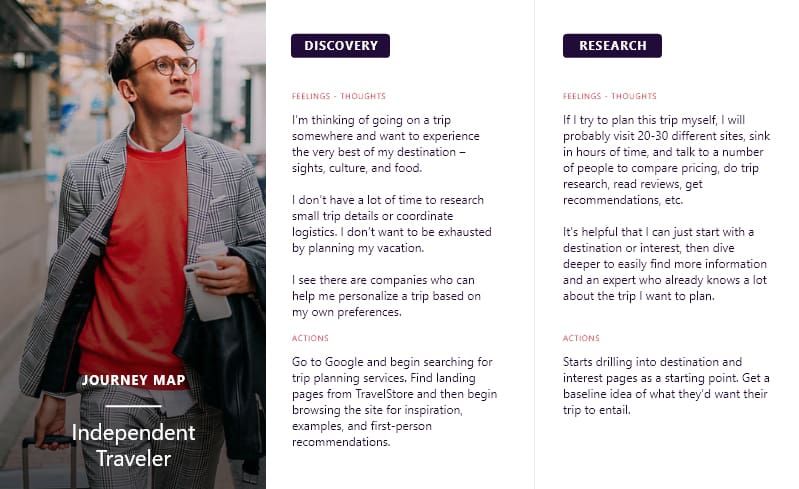
Having worked closely with the TravelStore team some years back, this project was a serendipitous opportunity to bring to life the creativity and personality of their brand. Although global travel came to a sudden standstill as the project got underway, this collaboration produced a site experience that communicates a rich sense of place and reflects the personal touch that sets TravelStore apart.

ICONS IMAGERY & DETAILS
Our team custom-designed a collection of icons and illustrations to support service-oriented content throughout the site. Unique iconography designed to match TravelStore’s well-established logo style adds an extra layer of personalization to the site experience. Each destination page features a unique, true-to-life contour map of the local geography.

The homepage immediately captures the user’s attention and encourages them to create their own experience, drawing them deeper into the site. This personalized experience reflects TravelStore’s one-size-doesn’t-fit-all mentality.

Choosing where to vacation can be daunting. Landing pages for each destination display snippets showing key facts like weather, dining recommendations, and client reviews to help users select an option that best suits them.

It was important to let users know that TravelStore serves discriminating corporate travelers as well. The corporate landing page is designed to acknowledge each organization’s needs and culture and reinforce the core message: personalized service.

Agent Profiles
To streamline conversions and reinforce personalization, each agent has their own profile page. Agent profiles are presented in a more personal social-media style format, allowing them to showcase their unique personalities, complete with their own photography and writing. They also list the agents ’ expertise, favorite trips, certifications, client reviews, and contact information.

RESPONSIVE LAYOUT
A responsive mobile version of the site caters to users on the go. It presents all the information found on the desktop site in easy-to-digest chunks for easily distracted viewers.

A megamenu simplifies navigation through various countries, interests, and cruises and encourages more exploration.
Tell Us About Yourself
Select services & budget*.
Brand Strategy, Visual Identity, Print/Marketing Collateral
Web Design & Development, Mobile App, eCommerce, Product Design, Design System
SEO / SEM & Analytics, UI/UX Design, Load Speed Optimization, Compliance, Digital Campaign
Tell Us About Your Project
Based in Los Angeles & New York
- Call us: +44 208 585 4080
- | [email protected]
- Travel Agents
- Destinations
- Isadora Villa
Destination Index

Villa Isadora is situated in a pine forest, which allows guests to enjoy their privacy just 210 m away from the sea.
Villa Isadora consists of a large building with two units and an apartment on the top floor. Each of the two units comprises of two bedrooms (1 double bedroom, 1 bedroom with bunk beds), a bathroom with a shower, a kitchenette, a dining / sitting area and a terrace overlooking the sea.
On the top floor is an apartment with three bedrooms, two bathrooms, a kitchen / dining / sitting area and a terrace. It consists of one double bedroom, one bedroom with bunk beds, and one twin bedroom (the beds can be connected). One bathroom has a shower, while another one has a hydro massage bathtub.
The house by the pool comprises of a kitchen / dining / sitting area, and a bathroom.
Villa Isadora is a luxuriously furnished villa situated on a small hill in Primosten with a beautiful sea view of the Primosten coast. Tastefully decorated rooms, fully equipped kitchen and a large terrace with an outdoor pool will make your holiday unforgettable.
Alternative COVID-19 policy . This villa is entitled to a full refund under our Covid-19 policy, 30 days prior to your holiday commencing. Should your local area, or the destination where your villa holiday is, go into a lockdown, 30 days prior to your arrival, you will be entitled to a credit voucher* or a deferral of your holiday** or a full refund.***Credit voucher to be used against any villa from our supplier's portfolio, subject to availability and subject to price differences.
- GROUND FLOOR
- Kitchenette
- Satellite TV
- Comfortable Seating
- Dining Facilities
- Exterior Access
- Fridge / Freezer
- Coffee Machine
- FIRST FLOOR
- EXTERIOR FEATURES
- Swimming Pool
IN THE AREA
Crafting Dreams into Reality - Your Vision, Our Passion
Team Building
Competition
Wedding & Engagement
We are your partner in crafting exceptional events,
tailored to your vision and executed with precision
Group Travel & Itinerary Planner
"The Philosophy behind the Name Isadora"
Deeply rooted in the spirit of Isidore - the God of Isis, fostering freedom, creativity, and natural expression in event design.
We break away from conventional norms, creating unique and unforgettable celebrations that blend creativity with profound significance.
Incorporating the hexagonal form into our logo, we embrace its versatile and flexible nature, symbolizing our adaptability and harmony in diverse event scenarios .
CHAT US, PLAN YOUR EVENT!
Embark on a transformative journey with Isadora Soul Lounge
- Share full article
Advertisement
Supported by
Pulitzer Prizes: 2024 Winners List
Here is the full list of winners and finalists.

By The New York Times
PUBLIC SERVICE
The Pulitzer committee honored ProPublica for the work of Joshua Kaplan, Justin Elliott, Brett Murphy, Alex Mierjeski and Kirsten Berg, citing their “groundbreaking and ambitious reporting that pierced the thick wall of secrecy surrounding the Supreme Court.”
Finalists KFF Health News and Cox Media Group; The Washington Post
BREAKING NEWS
Staff of Lookout Santa Cruz
Lookout Santa Cruz won for “its detailed and nimble community-focused coverage, over a holiday weekend, of catastrophic flooding and mudslides that displaced thousands of residents and destroyed more than 1,000 homes and businesses.”
Finalists Staff of Honolulu Civil Beat; Staff of The Los Angeles Times
INVESTIGATIVE REPORTING
Hannah Dreier of The New York Times
Ms. Dreier was honored for “a deeply reported series of stories revealing the stunning reach of migrant child labor across the United States — and the corporate and governmental failures that perpetuate it.”
Finalists Staff of Bloomberg; Casey Ross and Bob Herman of Stat
EXPLANATORY REPORTING
Sarah Stillman of The New Yorker
Ms. Stillman’s work was a “searing indictment of our legal system’s reliance on the felony murder charge and its disparate consequences, often devastating for communities of color,” the committee said.
Finalists Staff of Bloomberg; Staffs of The Texas Tribune, ProPublica and Frontline
LOCAL REPORTING
Sarah Conway of City Bureau and Trina Reynolds-Tyler of the Invisible Institute
Ms. Conway and Ms. Reynolds-Tyler were honored for “their investigative series on missing Black girls and women in Chicago that revealed how systemic racism and police department neglect contributed to the crisis.”
Finalists Jerry Mitchell, Ilyssa Daly, Brian Howey and Nate Rosenfield of Mississippi Today and The New York Times; Staff of The Villages Daily Sun
NATIONAL REPORTING
Staff of Reuters and Staff of The Washington Post
This year’s national reporting category had two winners. The staff of Reuters won for “an eye-opening series of accountability stories” focused on the automobile and aerospace businesses helmed by the billionaire Elon Musk. The staff of The Washington Post won for “its sobering examination of the AR-15 semiautomatic rifle.”
Finalists Bianca Vázquez Toness and Sharon Lurye of The Associated Press; Dave Philipps of The New York Times
INTERNATIONAL REPORTING
Staff of The New York Times
The New York Times won for its “wide-ranging and revelatory coverage of Hamas’ lethal attack in southern Israel on Oct. 7 , Israel’s intelligence failures and the Israeli military’s sweeping, deadly response in Gaza,” the committee said.
Finalists Julie Turkewitz and Federico Rios of The New York Times; Staff of The Washington Post
Feature writing
Katie Engelhart, contributing writer, The New York Times
Ms. Engelhart was honored “for her fair-minded portrait of a family’s legal and emotional struggles during a matriarch’s progressive dementia .” Her article “sensitively probes the mystery of a person’s essential self,” the committee said.
Finalists Keri Blakinger of the Marshall Project, co-published with The New York Times Magazine; Jennifer Senior of The Atlantic
Vladimir Kara-Murza, contributor, The Washington Post
The committee highlighted Mr. Kara-Murza’s “passionate columns written at great personal risk from his prison cell, warning of the consequences of dissent in Vladimir Putin’s Russia and insisting on a democratic future for his country.”
Finalists Brian Lyman of The Alabama Reflector; Jay Caspian Kang of The New Yorker
Justin Chang of The Los Angeles Times
Mr. Chang’s film criticism “reflects on the contemporary moviegoing experience,” the committee said, praising it as “richly evocative and genre-spanning.”
Finalists Zadie Smith, contributor, The New York Review of Books; Vinson Cunningham of The New Yorker
EDITORIAL WRITING
David E. Hoffman of The Washington Post
Mr. Hoffman was honored for his “compelling and well-researched series on new technologies and the tactics authoritarian regimes use to repress dissent in the digital age and how they can be fought.”
Finalists Isadora Rangel of The Miami Herald; Brandon McGinley and Rebecca Spiess of The Pittsburgh Post-Gazette
Illustrated Reporting and Commentary
Medar de la Cruz, contributor, The New Yorker
Mr. de la Cruz was honored for “his visually driven story set inside Rikers Island jail using bold black-and-white images that humanize the prisoners and staff through their hunger for books.”
Finalists Clay Bennett of The Chattanooga Times Free Press; Angie Wang, contributor, The New Yorker; Claire Healy, Nicole Dungca and Ren Galeno, contributor, of The Washington Post
BREAKING NEWS PHOTOGRAPHY
Photography Staff of Reuters
The photography staff won for “raw and urgent photographs documenting the Oct. 7 deadly attack in Israel by Hamas and the first weeks of Israel’s devastating assault on Gaza.”
Finalists Adem Altan of Agence France-Presse; Nicole S. Hester of The Tennessean
FEATURE PHOTOGRAPHY
Photography Staff of The Associated Press
The journalists were honored for “poignant photographs chronicling unprecedented masses of migrants and their arduous journey north from Colombia to the border of the United States.”
Finalists Nanna Heitmann, contributor, The New York Times; Hannah Reyes Morales, contributor, The New York Times
AUDIO REPORTING
Staffs of the Invisible Institute and USG Audio
The two newsrooms won for a “powerful series that revisits a Chicago hate crime from the 1990s, a fluid amalgam of memoir, community history and journalism.”
Finalists Dan Slepian and Preeti Varathan, contributor, of NBC News; Lauren Chooljian, Alison Macadam, Jason Moon, Daniel Barrick and Katie Colaneri of New Hampshire Public Radio
“Night Watch,” by Jayne Anne Phillips
Ms. Phillips won for her “beautifully rendered novel set in West Virginia’s Trans-Allegheny Lunatic Asylum in the aftermath of the Civil War where a severely wounded Union veteran, a 12-year-old girl and her mother, long abused by a Confederate soldier, struggle to heal.”
Finalists “Wednesday’s Child,” by Yiyun Li; “Same Bed Different Dreams,” by Ed Park
“Primary Trust,” by Eboni Booth
The committee described Ms. Booth’s play “Primary Trust” as a “simple and elegantly crafted story of an emotionally damaged man who finds a new job, new friends and a new sense of worth, illustrating how small acts of kindness can change a person’s life and enrich an entire community.”
Finalists “Here There Are Blueberries,” by Moises Kaufman and Amanda Gronich; “Public Obscenities,” by Shayok Misha Chowdhury
“No Right to an Honest Living: The Struggles of Boston’s Black Workers in the Civil War Era,” by Jacqueline Jones
Ms. Jones was awarded for her “original reconstruction of free Black life in Boston that profoundly reshapes our understanding of the city’s abolitionist legacy and the challenging reality for its Black residents.”
Finalists “Continental Reckoning: The American West in the Age of Expansion,” by Elliott West; “American Anarchy: The Epic Struggle Between Immigrant Radicals and the U.S. Government at the Dawn of the Twentieth Century,” by Michael Willrich
“King: A Life,” by Jonathan Eig, and “Master Slave Husband Wife: An Epic Journey From Slavery to Freedom,” by Ilyon Woo
Two awards were given in this category. Mr. Eig was honored for “a revelatory portrait of Martin Luther King, Jr. that draws on new sources to enrich our understanding of each stage of the civil rights leader’s life.”
Ms. Woo was honored for her narrative of the Crafts, “an enslaved couple who escaped from Georgia in 1848, with light-skinned Ellen disguised as a disabled white gentleman and William as her manservant.”
Finalists “Larry McMurtry: A Life,” by Tracy Daugherty
MEMOIR OR AUTOBIOGRAPHy
“Liliana’s Invincible Summer: A Sister’s Search for Justice,” by Cristina Rivera Garza
The committee called Ms. Rivera Garza’s work “a genre-bending account of the author’s 20-year-old sister,” who was murdered by a former boyfriend. It “mixes memoir, feminist investigative journalism and poetic biography stitched together with a determination born of loss,” the committee said.
Finalists “The Country of the Blind: A Memoir at the End of Sight,” by Andrew Leland; “The Best Minds: A Story of Friendship, Madness and the Tragedy of Good Intentions,” by Jonathan Rosen
“Tripas: Poems,” by Brandon Som
Mr. Som’s work is “a collection that deeply engages with the complexities of the poet’s dual Mexican and Chinese heritage, highlighting the dignity of his family’s working lives, creating community rather than conflict,” the committee wrote.
Finalists “To 2040,” by Jorie Graham; “Information Desk: An Epic,” by Robyn Schiff
GENERAL NONFICTION
“A Day in the Life of Abed Salama: Anatomy of a Jerusalem Tragedy,” by Nathan Thrall
The committee honored Mr. Thrall for his “finely reported and intimate account of life under Israeli occupation of the West Bank, told through a portrait of a Palestinian father whose 5-year-old son dies in a fiery school bus crash when Israeli and Palestinian rescue teams are delayed by security regulations.”
Finalists “Cobalt Red: How the Blood of the Congo Powers Our Lives,” by Siddharth Kara; “Fire Weather: A True Story From a Hotter World,” by John Vaillant
“Adagio (For Wadada Leo Smith),” by Tyshawn Sorey
Mr. Sorey’s saxophone concerto has “a wide range of textures presented in a slow tempo, a beautiful homage that’s quietly intense, treasuring intimacy rather than spectacle,” the committee said.
Finalists “Paper Pianos,” by Mary Kouyoumdjian; “Double Concerto for esperanza spalding, Claire Chase and large orchestra,” by Felipe Lara
Special citations
The writer and critic Greg Tate was honored posthumously for his influence in shaping public thought and language around hip-hop and street art. “His aesthetic, innovations and intellectual originality, particularly in his pioneering hip-hop criticism, continue to influence subsequent generations, especially writers and critics of color,” the committee wrote.
Journalists and Media Workers Covering the War in Gaza
“Under horrific conditions, an extraordinary number of journalists have died in the effort to tell the stories of Palestinians and others in Gaza,” the committee wrote. “This war has also claimed the lives of poets and writers among the casualties. As the Pulitzer Prizes honor categories of journalism, arts and letters, we mark the loss of invaluable records of the human experience.”
2024 Pulitzer Prizes announced: See full list of winners, nominees

The Pulitzer Prize Board announced winners and nominated finalists of the 108th Pulitzer Prize Monday.
Marjorie Miller , Administrator of the Pulitzer Prizes and the Vice President and Global Enterprise Editor at The Associated Press, announced the winners and finalists, which were awarded and designated on the recommendation of the Pulitzer Prize Board at Columbia University, according to a press release by the institution.
"The Pulitzer Prizes are more than journalism's esteemed honor," said Neil Brown, co-chair of the Pulitzer Prize Board. "They are a commitment to the highest standards of fairness, honesty and storytelling for those who pursue facts and reveal uncomfortable truths."
The Pulitzer Prize Board, on Thursday, also said it "recognizes the tireless efforts of student journalists across our nation’s college campuses , who are covering protests and unrest in the face of great personal and academic risk."
2024 Pulitzer Prize winners
Miller announced the 2024 Pulitzer Prize winners and nominated finalists via livestream on Monday.
"This year there was remarkable coverage of the Hamas attack on Israel and two wars in Gaza and Ukraine," Miller said before announcing winners in the field of Journalism. "There were tragic natural disasters in Hawaii and Turkey."
"The entries included many instances of workplace harm to employees, consumers and soldiers, hate crimes and criminal justice. Corruption and impunity and migration remained persistent themes in American life. And globally we saw stories on the proliferation of undemocratic uses of technology, along with the growing presence of AI in our lives."
Winners were awarded under the following categories in the field of journalism.
Breaking news reporting
- Staff of the Honolulu Civil Beat
- Staff of Los Angeles Times
- Winner: Staff of Lookout Santa Cruz, California
Investigative Reporting
- Staff of Bloomberg
- Winner: Hannah Dreier of The New York Times
- Casey Ross and Rob Herman of STAT
Public service
- KFF Health News and Cox Media Group
- Winner: ProPublica, for the work of Joshua Kaplan, Justin Elliot, Brett Murphy, Alex Mierjeski and Kirsten Berg
- The Washington Post
Explanatory reporting
- Winner: Sarah Stillman of The New Yorker
- Staff of The Texas Tribune, ProPublica and FRONTLINE
Local reporting
- Winner: Sarah Conway of City Bureau and Trina Reynolds-Tyler of the Invisible Institute
- Jerry Mitchell, Ilyssa Daly, Brian Howey and Nate Rosenfield of Mississippi Today and The New York Times
- Staff of The Villages Daily Sun
National reporting
- Bianca Vázquez Toness and Sharon Lurye of the Associated Press
- Dave Phillips of The New York Times
- Winner: Staff of Reuters
- Winner: Staff of The Washington Post
International reporting
- Winner: Staff of The New York Times
- Julie Turkewitz and Federico Rios of The New York Times
- Staff of The Washington Post
Feature writing
- Keri Blakinger of The Marshall Project, co-published with The New York Times Magazine
- Winner: Katie Engelhart, contributing writer, The New York Times
- Jennifer Senior of The Atlantic
- Brian Lyman of the Alabama Reflector
- Jay Caspian Kang of The New Yorker
- Winner: Vladimir Kara-Murza, contributor, The Washington Post
- Zadie Smith, contributor, The New York Review of Books
- Vinson Cunningham of The New Yorker
- Winner: Justin Chang of the Los Angeles Times
Editorial writing
- Isadora Rangel of the Miami Herald
- Brandon McGinley and Rebecca Spiess of the Pittsburgh Post-Gazette
- Winner: David E. Hoffman of The Washington Post
Illustrated reporting and commentary
- Clay Bennett of the Chattanooga Times Free Press
- Winner: Medar de la Cruz, contributor, The New Yorker
- Angie Wang, contributor, The New Yorker
- Claire Healy, Nicole Dungca and Ren Galeno, contributor, of The Washington Post
Breaking news photography
- Adem Altan of Agence France Presse
- Nicole S. Hester of The Tennessean
- Winner: Photography Staff of Reuters
Feature photography
- Hannah Reyes Morales, contributor, The New York Times
- Nanna Heitman, contributor, The New York Times
- Photography Staff of Associated Press
Audio reporting
- Winner: Staff of the Invisible Institute, Chicago and USG Audio, California
- Dan Slepian and Preeti Varathan, contributor, of NBC News
- Lauran Chooljian, Alison Macadam, Jason Moon, Daniel Barrick and Katie Colaneri of New Hampshire Public Radio
Categories under "Arts and Letters" include:
- "Here There Are Blueberries" by Moises Kaufman and Amanda Gronich
- Winner: "Primary Trust" by Eboni Booth
- "Public Obscenities" by Shayok Misha Chowdhury
- Winner: "No Right to an Honest Living: The Struggles of Boston’s Black Workers in the Civil War Era" by Jacqueline Jones (Basic Books)
- "Continental Reckoning: The American West in the Age of Expansion" by Elliot West (University of Nebraska Press)
- "American Anarchy: The Epic Struggle between Immigrant Radicals and the US Government at the Dawn of the Twentieth Century" by Michael Willrich (Basic Books)
- "Larry McMurtry: A Life" by Tracy Daughtery
- Winner: "King: A Life" by Jonathan Eig
- Winner: "Master Slave Husband Wife: An Epic Journey from Slavery to Freedom" by Ilyon Woo
Memoir or Autobiography
- Winner: "Liliana's Invincible Summer: A Sister's Search for Justice" by Cristina Rivera Garza
- "The Country of the Blind: A Memoir at the End of Sight" by Andrew Leland
- "The Best Minds: A Story of Friendship, Madness and the Tragedy of Good Intentions" by Jonathen Rosen
- "To 2040" by Jorie Graham
- "Information Desk: An Epic" by Robyn Schiff
- Winner: "Tripas: Poems" by Brandom Som
General Nonfiction
- "Fire Weather: A True Story From a Hotter World" by John Vaillant
- Winner: "A Day in the Life of Abed Salama: Anatomy of a Jerusalem Tragedy" by Nathan Thrall
- "Cobalt Red: How the Blood of the Congo Powers Our Lives" by Sidharth
- "Double Concerto for esperanza spalding, Claire Chase and large orchestra by Felipe Lara
- Paper Pianos by Mary
- Winner: Adagio (for Wadada Leo Smith) by Tyshawn Sorey
- Winner: "Night Watch" by Jayne Anne Phillips
- "Wednesday's Child" by Yiyun Li
- "Same Bed Different Dreams" by Ed Park
Special Citation
- Greg Tate (1967 - 2021)
- Journalists covering Gaza
2024 Pulitzer Prize Announcement: How to watch
Watch the 2024 Pulitzer Prize announcements here:
2023 winners
Last year's winners included the staff of the Los Angeles Times for breaking news reporting that uncovered racist comments by city officials, and the staff of The Wall Street Journal for investigative reporting on financial conflicts of interest among federal officials.
Austin American-Statesman , part of the USA TODAY Network, was also a finalist in the category of public service for its coverage on law enforcement’s flawed response to the Uvalde shooting that left 19 school children and two teachers dead Texas.
Individual winners included Eli Saslow of The Washington Post for feature writing, Kyle Whitmire of AL.com for commentary and Andrea Long Chu of New York Magazine for criticism.
Saman Shafiq is a trending news reporter for USA TODAY. Reach her at [email protected] and follow her on X @saman_shafiq7.
- Ethics & Leadership
- Fact-Checking
- Media Literacy
- The Craig Newmark Center
- Reporting & Editing
- Ethics & Trust
- Tech & Tools
- Business & Work
- Educators & Students
- Training Catalog
- Custom Teaching
- For ACES Members
- All Categories
- Broadcast & Visual Journalism
- Fact-Checking & Media Literacy
- In-newsroom
- Memphis, Tenn.
- Minneapolis, Minn.
- St. Petersburg, Fla.
- Washington, D.C.
- Poynter ACES Introductory Certificate in Editing
- Poynter ACES Intermediate Certificate in Editing
- Ethics & Trust Articles
- Get Ethics Advice
- Fact-Checking Articles
- International Fact-Checking Day
- Teen Fact-Checking Network
- International
- Media Literacy Training
- MediaWise Resources
- Ambassadors
- MediaWise in the News
Support responsible news and fact-based information today!
Here are the winners of the 2024 Pulitzer Prizes
A list of the winners of journalism’s top honor, including links to the winning stories..

The winners of the 2024 Pulitzer Prizes were announced from Columbia University Monday afternoon.
The Pulitzers are regarded as the highest honor a U.S.-based journalist or organization can receive.
This year’s awards come as universities across the country, including Columbia, grapple with protests over the war in Gaza. Much of Columbia’s Morningside campus has been closed to everyone except essential personnel and students living in on-campus residence halls. The Pulitzer board instead met at the corporate offices of The Associated Press.
Poynter President Neil Brown is co-chair of the Pulitzer Prize Board. Brown declined to discuss last week’s board deliberations, but offered:
“The journalism honored today connects with us on a personal level. Through service to our communities, large and small, and with exceptional storytelling at a time of conflict and confusion, journalists provide insight and reveal uncomfortable truths. The Pulitzer Prizes are essential to celebrating the value of that.”
During the announcement, the Pulitzer Prize Board renewed its call for Russia to free Wall Street Journal reporter Evan Gershkovich, who has been wrongfully detained for more than a year. It also awarded two special citations this year — to the late writer and critic Greg Tate, and to journalists covering Gaza.
Read more about the winners and finalists below.
Breaking News Reporting
Awarded to the staff of Lookout Santa Cruz for its detailed and nimble community-focused coverage, over a holiday weekend, of catastrophic flooding and mudslides that displaced thousands of California residents and destroyed more than 1,000 homes and businesses
- Staff of the Honolulu Civil Beat for its distinctive, sweeping and urgent coverage of the Maui wildfires that killed more than 100 people and left a historic town in ruins, reporting that held officials to account and chronicled the aftermath and efforts to rebuild
- Staff of the Los Angeles Times for urgent and thoughtful coverage of a Lunar New Year overnight shooting that left 11 senior citizens dead, demonstrating clear knowledge of and commitment to the local Asian communities
Investigative Reporting
Awarded to Hannah Dreier of The New York Times for a deeply reported series of stories revealing the stunning reach of migrant child labor across the United States and the corporate and governmental failures that perpetuate it
- Staff of Bloomberg for a deep and rigorous investigation of how the U.S. government aided the global spread of gun violence, prompting the Biden administration to halt most gun exports for 90 days while it reviewed the federal government’s marketing relationship with gun manufacturers
- Casey Ross and Rob Herman of Stat for exposing how United Health Group, the nation’s largest health insurer, used an unregulated algorithm to override clinicians’ judgments and deny care, highlighting the dangers of artificial intelligence use in medicine
Explanatory Reporting
Awarded to Sarah Stillman of The New Yorker for a searing indictment of our legal system’s reliance on the felony murder charge and its disparate consequences, often devastating for communities of color
- Staff of Bloomberg for rigorous, far-reaching reporting that holds corporate water profiteers to account and exposes how they willfully exacerbate the effects of climate change at the expense of less powerful communities
- Staffs of The Texas Tribune, ProPublica and Frontline for advancing understanding of law enforcement’s catastrophic response to the mass shooting at a Uvalde, Texas elementary school and also for documenting the political and policy shortcomings that have led to similar deadly police failures across the country
Local Reporting
Awarded to Sarah Conway of City Bureau and Trina Reynolds-Tyler of the Invisible Institute for their investigative series on missing Black girls and women in Chicago that revealed how systemic racism and police department neglect contributed to the crisis
- Jerry Mitchell, Ilyssa Daly, Brian Howey and Nate Rosenfield of Mississippi Today and The New York Times for their detailed examination of corruption and abuse, including the torturing of suspects, by Mississippi sheriffs and their officers over two decades
- Staff of The Villages Daily Sun for its comprehensive investigation and moment-by-moment account of Florida officials’ inaction before, during and after Hurricane Ian, the deadliest storm to strike the state since 1935
Coming this summer: A Poynter report on the state of the news.
National Reporting
Awarded to the staff of Reuters for an eye-opening series of accountability stories focused on Elon Musk’s automobile and aerospace businesses, stories that displayed remarkable breadth and depth and provoked official probes of his companies’ practices in Europe and the United States
Awarded to the staff of The Washington Post for its sobering examination of the AR-15 semi-automatic rifle, which forced readers to reckon with the horrors wrought by the weapon often used for mass shootings in America
- Bianca Vázquez Toness and Sharon Lurye of The Associated Press for a deeply reported series on the corrosive effect of the pandemic on public education, highlighting the staggering number of students missing from classrooms across America
- Dave Philips of The New York Times for groundbreaking reporting that uncovered a pattern of traumatic brain injuries among U.S. troops from blast exposures caused by the weapons they were firing
International Reporting
Awarded to the staff of The New York Times for its wide-ranging and revelatory coverage of Hamas’ lethal attack in southern Israel on Oct. 7, Israel’s intelligence failures and the Israeli military’s sweeping, deadly response in Gaza
- Julie Turkewitz and Federico Rios of The New York Times for their immersive and ambitious coverage of migration purgatory in the Darién Gap between Colombia and Panama
- Staff of The Washington Post for a sweeping on-the-ground investigation in India that exposed the methodical undermining of the world’s largest democracy by Narendra Modi and his Hindu nationalist allies, who have deployed social media to foment hate and pressure American tech giants to bend to government power
Feature Writing
Awarded to Katie Engelhart, contributing writer to The New York Times , for her fair-minded portrait of a family’s legal and emotional struggles during a matriarch’s progressive dementia that sensitively probes the mystery of a person’s essential self
- Keri Blakinger of The Marshall Project, co-published with The New York Times Magazine , for her insightful, humane portrait, reported with great difficulty, of men on Death Row in Texas who play clandestine games of “Dungeons and Dragons,” countering their extreme isolation with elaborate fantasy
- Jennifer Senior of The Atlantic for her beautifully rendered account of her disabled aunt, who was institutionalized as a small child, and the lasting effects on her family, told in the context of present-day care and intervention that makes different outcomes possible
Awarded to Vladimir Kara-Murza, contributor to The Washington Post , for passionate columns written at great personal risk from his prison cell, warning of the consequences of dissent in Vladimir Putin’s Russia and insisting on a democratic future for his country
- Brian Lyman of the Alabama Reflector for incisive columns that challenge of range of state policies flouting democratic norms and targeting vulnerable populations, written with the commanding authority of a veteran political observer
- Jay Caspian Kang of The New Yorker for provocative columns that urge us to examine popular narratives on such critical topics as affirmative action, racial politics and the portrayal of gun violence
Awarded to Justin Chang of the Los Angeles Times for richly evocative and genre-spanning film criticism that reflects on the contemporary moviegoing experience
- Zadie Smith, contributor to The New York Review of Books , for a review of the film “Tár” that addressed with wit and ease such consequential themes as mortality and the clash of generations
- Vinson Cunningham of The New Yorker for theater reviews that reflect a formidable knowledge of the stage and the mechanics of performance along with canny observations on the human condition
Editorial Writing
Awarded to David E. Hoffman of The Washington Post for a compelling and well-researched series on new technologies and the tactics that authoritarian regimes use to repress dissent in the digital age and how they can be fought
- Isadora Rangel of the Miami Herald for a scathing series that roots the city’s multiple political scandals in a troubled local democracy and champions electoral reforms
- Brandon McGinley and Rebecca Spiess of the Pittsburgh Post-Gazette for ambitious, investigative editorials that examine a collapse in services for the homeless in Pittsburgh, and the city’s failure to account for millions of dollars meant to offer relief
Illustrated Reporting and Commentary
Awarded to Medar de la Cruz, contributor to The New Yorker , for his visually driven story, set inside Rikers Island jail, using bold black and white images, that humanize the prisoners and staff through their love of books
- Clay Bennett of the Chattanooga Times Free Press for a portfolio of deceptively gentle, mostly wordless cartoons full of juxtapositions that ably communicate complex, sophisticated messages
- Angie Wang, contributor to The New Yorker , for a vivid illustrated journey with her toddler that explains how human language learning can never be supplanted by AI
- Claire Healy, Nicole Dungca and Ren Galeno, contributor, of The Washington Post , for a masterful and sensitive use of the comic form to reveal the story of a great injustice to a group of Filipinos exhibited at the 1904 World’s Fair in St. Louis, where some of them died
Breaking News Photography
Awarded to the photography staff of Reuters for raw and urgent photographs documenting the Oct. 7 deadly attack in Israel by Hamas and the first weeks of Israel’s devastating assault on Gaza
- Adem Altan of Agence Free Presse for a heartbreaking image of a man clutching the hand of his deceased daughter a day after a 7.8-magnitude earthquake killed more than 50,000 people in Turkey and Syria
- Nicole S. Hester of The Tennessean for a distressing image of a young girl looking out of a school bus in anguish as she is evacuated from the scene of a deadly shooting at The Covenant School in Nashville
Feature Photography
Awarded to the photography staff of The Associated Press for poignant photographs, chronicling unprecedented masses of migrants and their arduous journey north from Colombia to the border of the United States
- Nanna Heitmann, contributor to The New York Times , for illuminating photographs portraying a generation living under President Vladimir Putin’s resurgent nationalism while Russia is at war in Ukraine
- Hannah Reyes Morales, contributor to The New York Times , for a creative series of photographs documenting a “youthquake” occurring in Africa where, by 2050, the continent will account for one-quarter of the world’s population and one-third of its young people
Audio Reporting
Awarded to the staffs of the Invisible Institute and USG Audio for a powerful series that revisits a Chicago hate crime from the 1990s, a fluid amalgam of memoir, community history and journalism
- Dan Slepian and Preeti Varathan, contributor, of NBC News , for their relentless 20-year investigation that resulted in a wrongfully convicted man finally receiving clemency
- Lauren Chooljian, Alison Macadam, Jason Moon, Daniel Barrick and Katie Colaneri of New Hampshire Public Radio for their gripping and extensively reported investigation of corruption and sexual abuse within the lucrative recovery industry that sought accountability despite legal pressure
Public Service
Awarded to ProPublica, for the work of Joshua Kaplan, Justin Elliott, Bretty Murphy, Alex Mierjeski and Kirsten Berg , groundbreaking and ambitious reporting that pierced the thick wall of secrecy surrounding the Supreme Court to reveal how a small group of politically influential billionaires wooed justices with lavish gifts and travel, pushing the court to adopt its first code of conduct
- KFF Health News and Cox Media Group for uncovering millions of cases in which the Social Security Administration overpaid beneficiaries, then demanded immediate repayment, imposing debts on elderly and disabled people who had already spent the funds
- The Washington Post , for its sobering examination of the AR-15 semi-automatic rifle, which forced readers to reckon with the horrors wrought by the weapon often used for mass shootings in America
Special Citations
Greg Tate: The Pulitzer Board awards a special citation for the late writer and critic Greg Tate, whose language — cribbed from literature, academia, popular culture and hip hop — was as influential as the content of his ideas. His aesthetic innovations and intellectual originality, particularly in his pioneering hip hop criticism, continue to influence subsequent generations, particularly writers and critics of color.
Journalists covering Gaza: In recent years, the Pulitzer Board has issued citations honoring journalists covering wars in Ukraine and Afghanistan. This year, the board recognizes the courageous work of journalists and media workers covering the war in Gaza. Under horrific conditions, an extraordinary number of journalists have died in the effort to tell the stories of Palestinians and others in Gaza. This war has also claimed the lives of poets and writers among the casualties. As the Pulitzer Prizes honor categories of journalism, arts, and letters, we mark the loss of invaluable records of the human experience.
The board also announced Letters, Drama and Music awards Monday, including for Fiction, Drama, History, Biography, Memoir or Autobiography, Poetry, General Nonfiction and Music.
More from Poynter on the 2024 Pulitzer Prizes:
Lookout santa cruz, digital site with a backstory, wins pulitzer for breaking news, small newsrooms won big in the 2024 pulitzers, the invisible institute won two pulitzers this year. what is it.
- A sign of the times as Pulitzer Prizes are announced
- Pulitzers recognize coverage of Israel-Hamas war, honor journalists working in Gaza
- Among the Pulitzer Prize winners, where are the metros?
- Reuters wins Pulitzer for Israel-Gaza photography
- A rare illustrated look into Rikers wins a Pulitzer
- Associated Press wins Pulitzer for documenting arduous migration journeys
- From the archives: Behind the Pulitzers: A look into the inner workings of journalism’s Super Bowl
- From the archives: How do you pronounce Pulitzer?

Opinion | Poynter Report special edition: The Pulitzer Prizes
Monday was one of the biggest days of the year in journalism. It was not a typical year for the Pulitzers.

Site founded by former newspaper industry analyst Ken Doctor is set up as a public benefit corporation
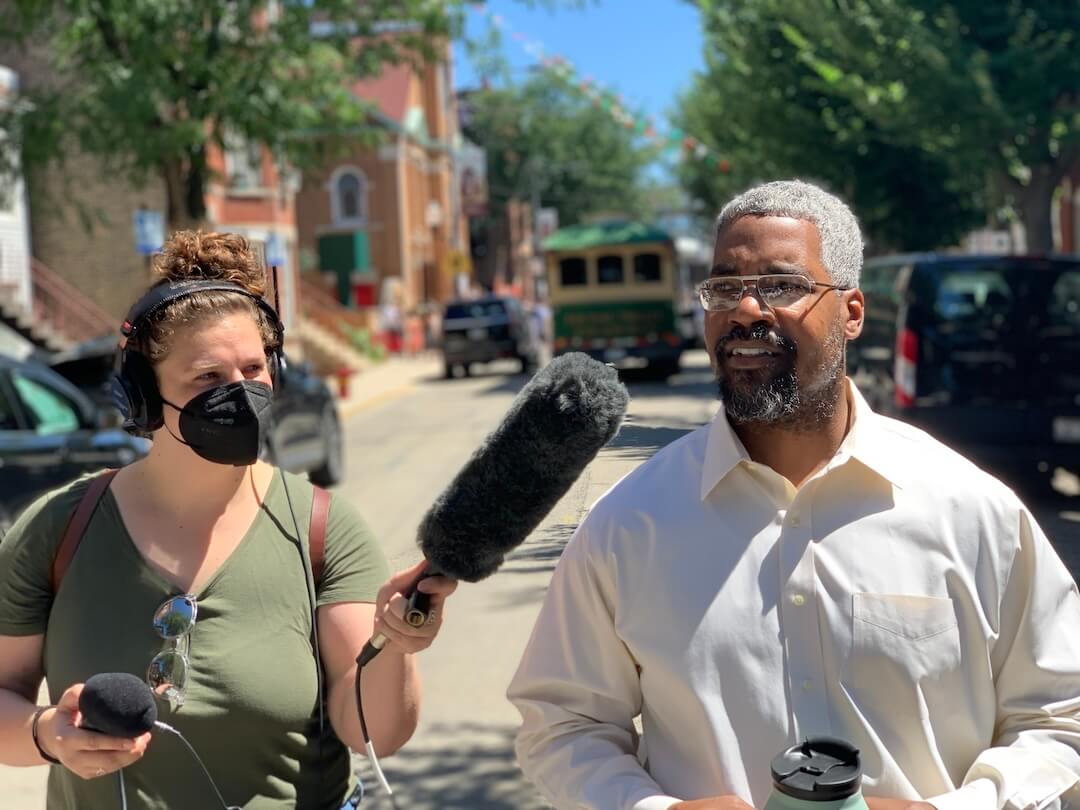
Major news outlets took home plenty of awards, but smaller outlets like Lookout Santa Cruz, the Invisible Institute and City Bureau were among them

The small Chicago-based nonprofit won Pulitzers in Local Reporting and Audio Reporting for its work on criminal justice and policing

Opinion | A sign of the times as Pulitzer Prizes are announced
The world changed on Oct. 7. As with past awards for Vietnam, Watergate and COVID coverage, the 2024 Pulitzer winners reflect that grim moment
You must be logged in to post a comment.
This site uses Akismet to reduce spam. Learn how your comment data is processed .
Start your day informed and inspired.
Get the Poynter newsletter that's right for you.

COMMENTS
Isadora 3, a user-friendly platform that responds to and evolves with your creativity. Isadora 3, a user-friendly platform that responds to and evolves with your creativity. ... PAMELA Z: Travel, Sound and Memory. Studying classical voice and singing arias somehow lead Pamela Z towards the life of an experimental performer-combining sound ...
Situated between Key Largo and Marathon in the Florida Keys, Islamorada is a village of islands known as the "Sport-Fishing Capital of the World." Islamorada has top-notch guides and charter services offering both offshore and backcountry excursions to help anglers reel in coveted species from sailfish to bonefish and tarpon.. Islamorada's six islands — Plantation Key, Windley Key ...
Angela Isadora Duncan (May 26, 1877 or May 27, 1878 - September 14, 1927) was an American-born dancer and choreographer, who was a pioneer of modern contemporary dance and performed to great acclaim throughout Europe and the US. ... A desire to travel brought her to Chicago, where she auditioned for many theater companies, finally finding a ...
Isadora Duncan was a trailblazing dancer and instructor whose emphasis on freer forms of movement was a precursor to modern dance techniques. ... favoring a legal union to allow him travel to the ...
Isadora Duncan (born May 26, 1877, or May 27, 1878, San Francisco, California, U.S.—died September 14, 1927, Nice, France) was an American dancer whose teaching and performances helped to free ballet from its conservative restrictions and presaged the development of modern expressive dance. She was among the first to raise interpretive dance ...
In Moscow, Isadora met the young poet Sergei Esenin and broke her previous vow by marrying him in order that he be allowed to travel with her during a tour of America. America denounced Isadora's outspoken love of Russia but Duncan was unrepentant: "Yes, I am a revolutionist," she said to the press, "All true artists are revolutionists."
The great American dancer Isadora Duncan led a tragic life, and her worst year — just after the deaths of her first two children in an accident, forms the core of Amelia Gray's powerful new novel.
Isadora Duncan grew up in the Bay area under the guidance of her mother, a piano teacher and avid believer in the arts. Duncan adopted her own form of expressive movement by age ten, and determinedly refused vaudeville gigs as a young adult to earn recognition for her own choreography. She rejected social norms—both onstage and off— which ...
Today, college intern Andreia Wardlaw explores the life and legacy of Isadora Duncan, a "mother of modern dance" along with Martha Graham and Katherine Dunham, both of whom are featured in Women's Voices. Duncan appears in the New-York Historical Society's Arnold Genthe Photograph Collection alongside several other images of modern dance.
Isadora Duncan dancing in an amphitheatre in Athens, photograph by Raymond Duncan, 1903. Isadora Duncan, orig. Angela Duncan, (born May 26, 1877, or May 27, 1878, San Francisco, Calif., U.S.—died Sept. 14, 1927, Nice, Fr.), U.S. interpretive dancer. She rejected the conventions of classical ballet and based her technique on natural rhythms ...
For her part, Isadora Duncan began to work at a young age. She dropped out of school by age 10, per the Isadora Duncan Dance Company. Along with her sister, Elizabeth, she earned money by teaching dance to local children. This is apparently where she turned rather sour on ballet, once saying it was little more than "affected grace and toe walking."
Shop Isadora Women's Bags at up to 70% off! Get the lowest price on your favorite brands at Poshmark. Poshmark makes shopping fun, affordable & easy! ... Isadora Hand Tooled Leather Tote Travel Bag NWT $169 $299 Size: OS ISADORA studmuffin50. 5. Isadora Black Leather Phone Crossbody ...
World by Isa is a travel blog that focuses on travel around the world, giving especial insights into culture and history, and helping you to build itineraries ... Hi, I'm Isadora, a Brazilian-born who decided to fully embrace my school nickname Dora the Explorer, and travel the world. Read more. MUSEUMS. UNESCO. ARTWORKS. see WHAT'S NEW
Isadora 's travel photos. Get in touch with Isadora. Reach out to customize and book your own experience. Or, just to chat about travel in general. You can normally expect a response from Isadora within a business day or so. You'll also be subscribed to our travel newsletter (you can unsubscribe at any time).
Isadora. Isadora, an 18-year-old Egyptian girl of great beauty, lived in Egypt in the second century AD, specifically to the year 120 AD in the era of Emperor Hadrian (117 AD-138 AD). The cemetery is built of burnt mud bricks, and its colour is dark, and in most parts, it is painted white from the outside and the inside, and in front of the ...
Free and open company data on Dominican Republic company ISADORA TRAVEL (company number 39607) Changes to our website — to find out why access to some data now requires a login, click here. The Open Database Of The Corporate World. Search. Companies Officers Log in/Sign up; ISADORA TRAVEL Company Number 39607
4 nights Nile cruise itinerary. 7 nights cruise itinerary Ex Luxor. Day 01 Friday: Aswan. Day 02 Saturday: Aswan - Kom Ombo - Edfu. Day 03 Sunday: Edfu - Luxor. Day 04 Monday: Luxor - Disembarkation. Day 01 Monday: Luxor. Day 02 Tuesday: Luxor - Edfu. Day 03 Wednesday: Edfu - Kom Ombo - Aswan.
We can create personalized private group travel experiences that cater to your specific needs and desires. Whether you're planning a family reunion, a corporate retreat, or a friends' getaway, our dedicated team of travel experts will collaborate closely with you to design a bespoke itinerary that surpasses expectations.
IsaDora. Multifunctional Makeup & Brush Travel case designed to store all kinds of makeup and brushes. Keep your brushes and makeup organized with this practical and protective case - convenient to bring when travelling. Includes a detachable mini-pouch for additional make-up storage and protection. The handy double zipper ensures your tools ...
TravelStore. Isadora Agency, a custom web design agency partnered with TravelStore, one of the top-rated travel management companies in America, to create a seamless website experience for travel connoisseurs. TravelStore crafts unique itineraries for vacationers looking to travel in style and personalizes superior corporate travel programs for ...
Villa Isadora is situated in a pine forest, which allows guests to enjoy their privacy just 210 m away from the sea. Villa Isadora consists of a large building with two units and an apartment on the top floor. Each of the two units comprises of two bedrooms (1 double bedroom, 1 bedroom with bunk beds), a bathroom with a shower, a kitchenette, a ...
Isadora Lyrics: She has a taste for divination, Isadora / A dark matter concentration, Isadora / Spurning the laws of gravitation, Isadora / Isadora's barefoot incantation, Isadora / Time travel
U.S. Air Force Airmen from graduating Class 24-09 break their wings at Laughlin Air Force Base, Texas, May 3, 2024. Twenty-seven U.S. Air Force officers were awarded silver wings during the ceremony, symbolizing their completion of the Undergraduate Pilot Training program. (U.S. Air Force photo by Airman 1st Class Keira Rossman)
Deeply rooted in the spirit of Isidore - the God of Isis, fostering freedom, creativity, and natural expression in event design. We break away from conventional norms, creating unique and unforgettable celebrations that blend creativity with profound significance. Incorporating the hexagonal form into our logo, we embrace its versatile and ...
This year's national reporting category had two winners. The staff of Reuters won for "an eye-opening series of accountability stories" focused on the automobile and aerospace businesses ...
Winner: "Liliana's Invincible Summer: A Sister's Search for Justice" by Cristina Rivera Garza. "The Country of the Blind: A Memoir at the End of Sight" by Andrew Leland. "The Best Minds: A Story ...
May 6, 2024. The winners of the 2024 Pulitzer Prizes will be announced from Columbia University Monday afternoon. The Pulitzers are regarded as the highest honor a U.S.-based journalist or ...